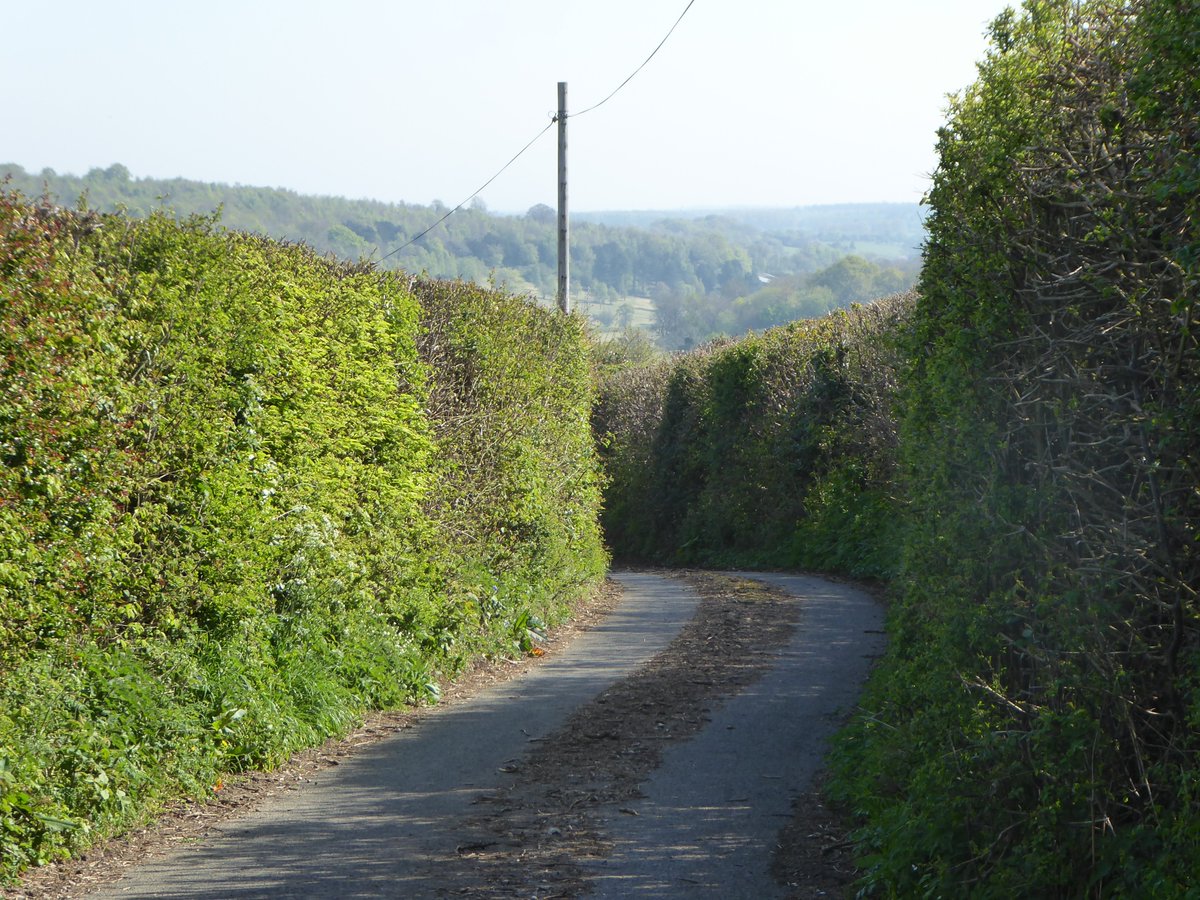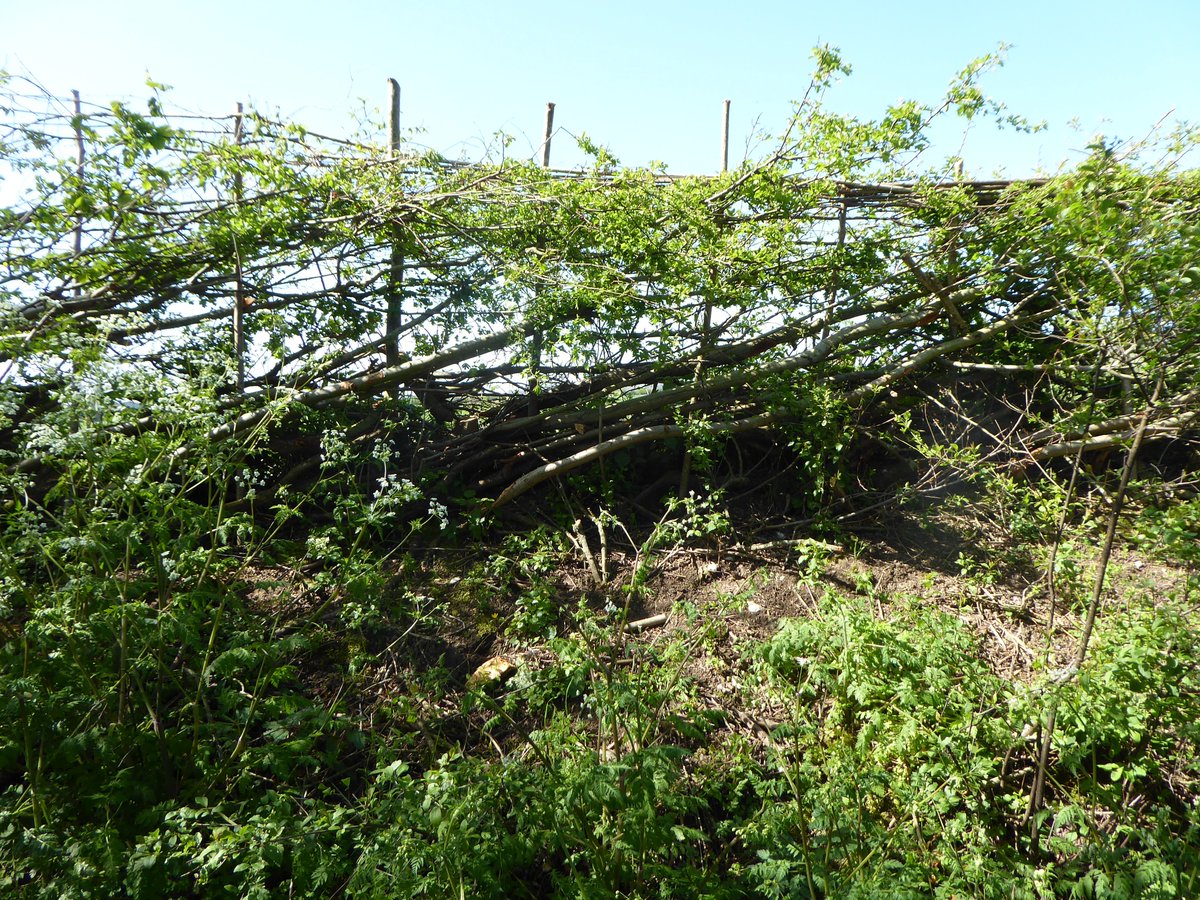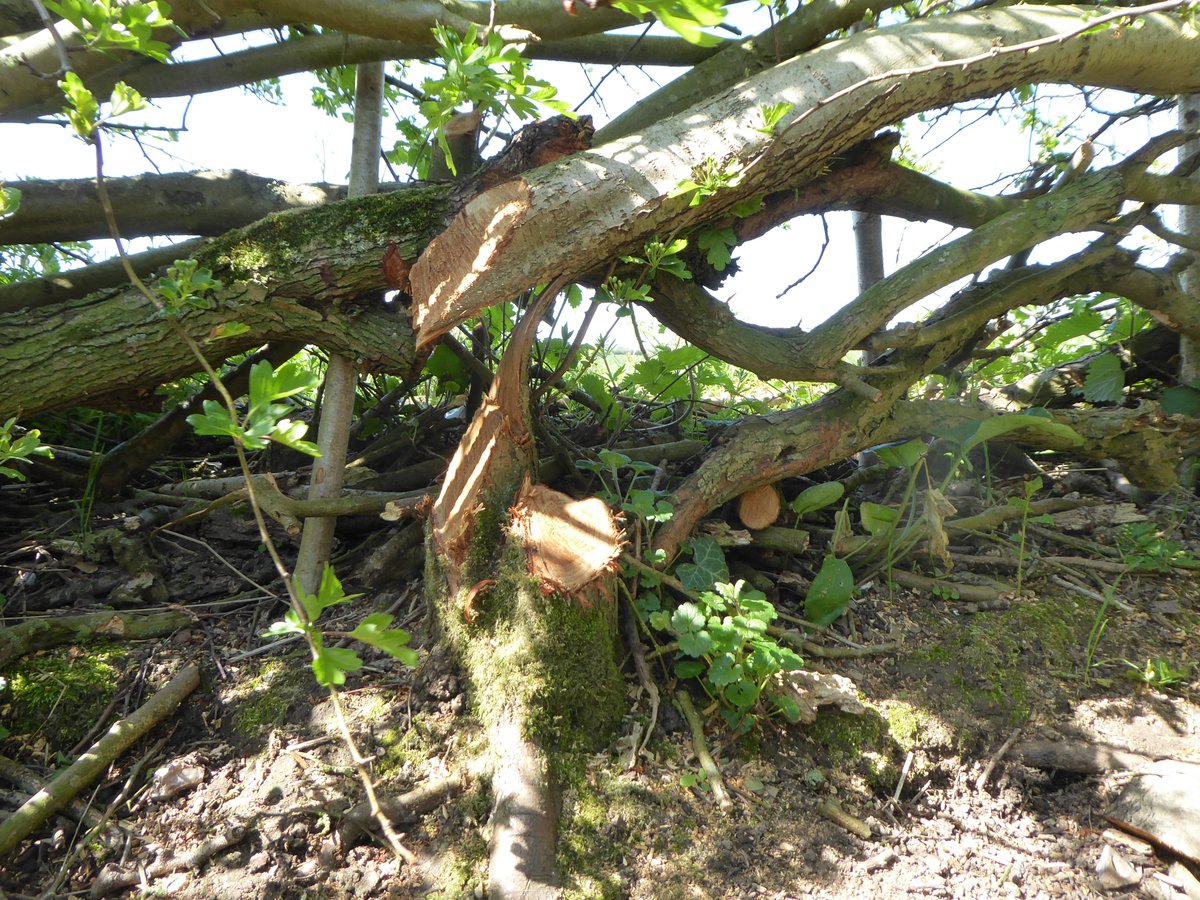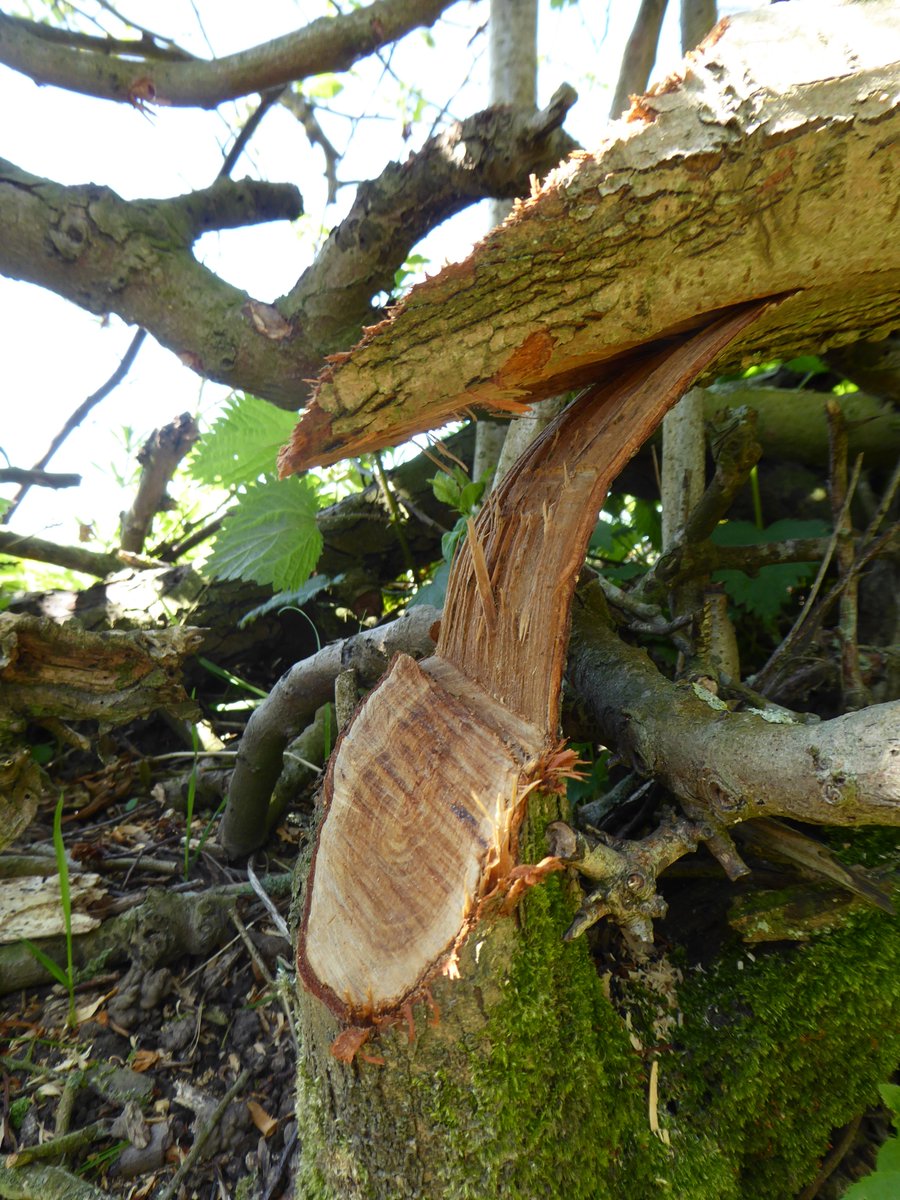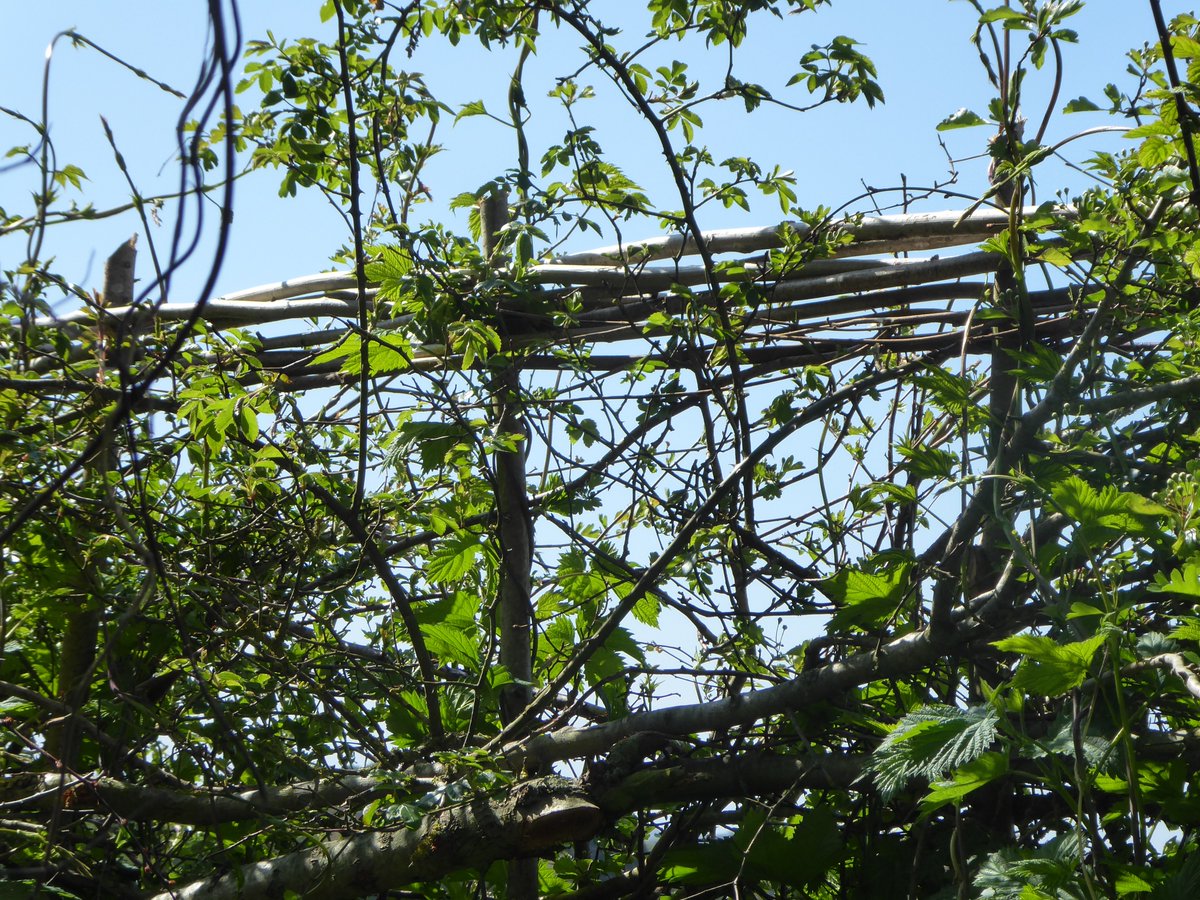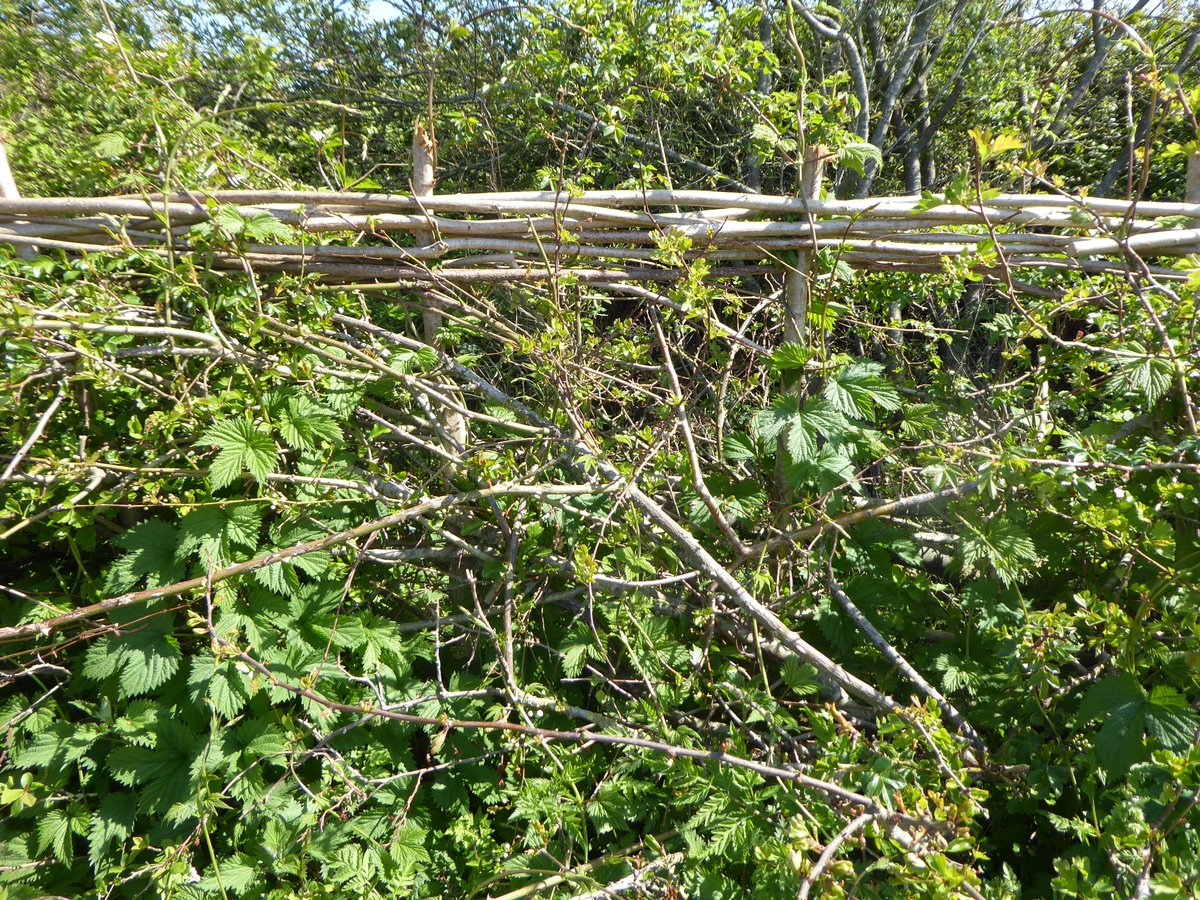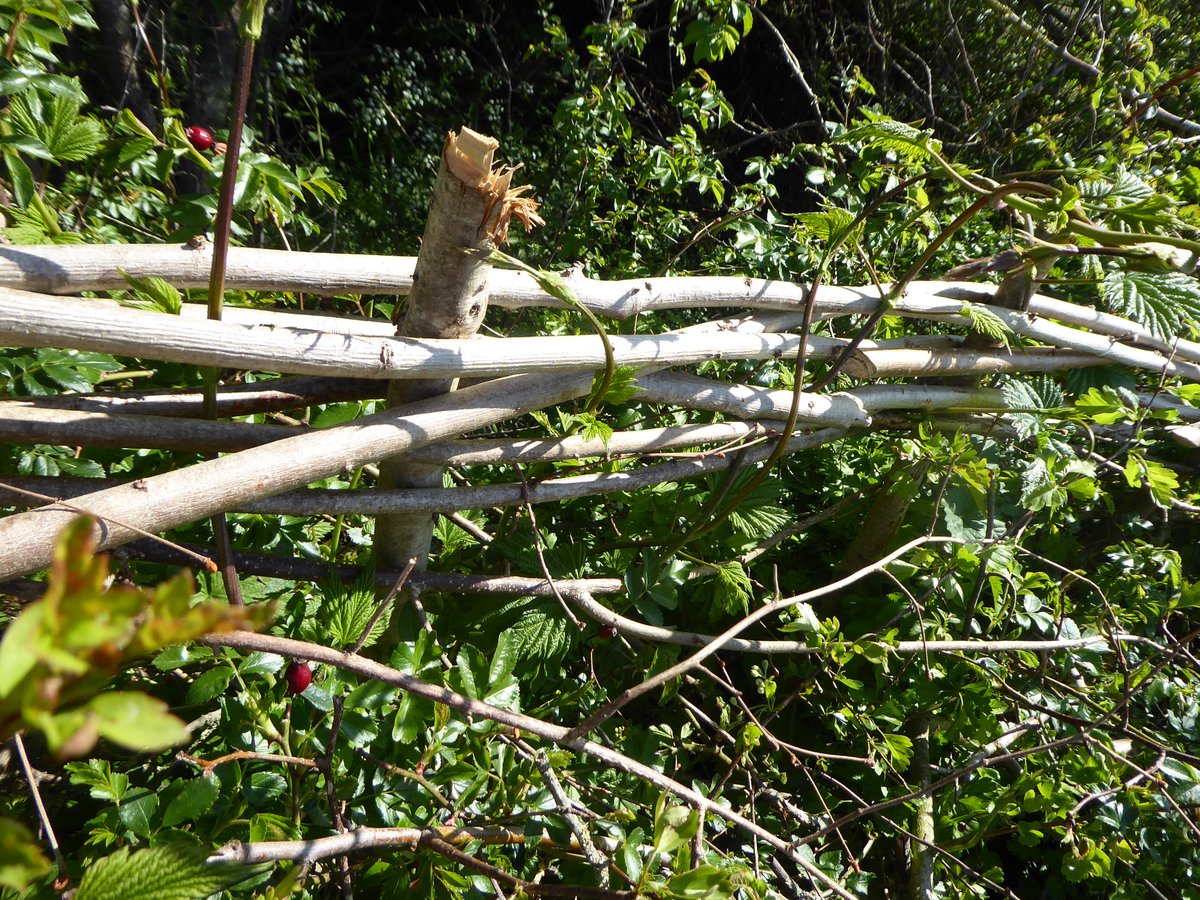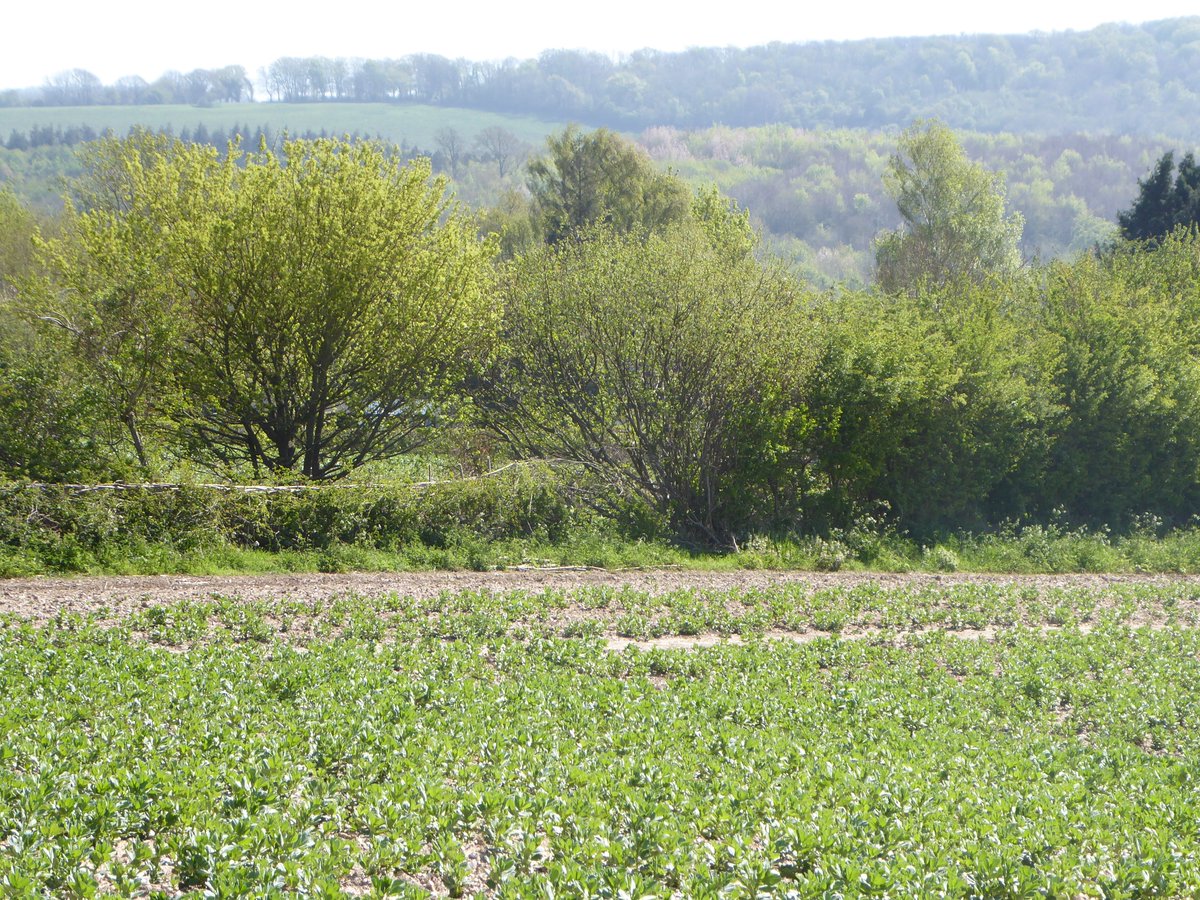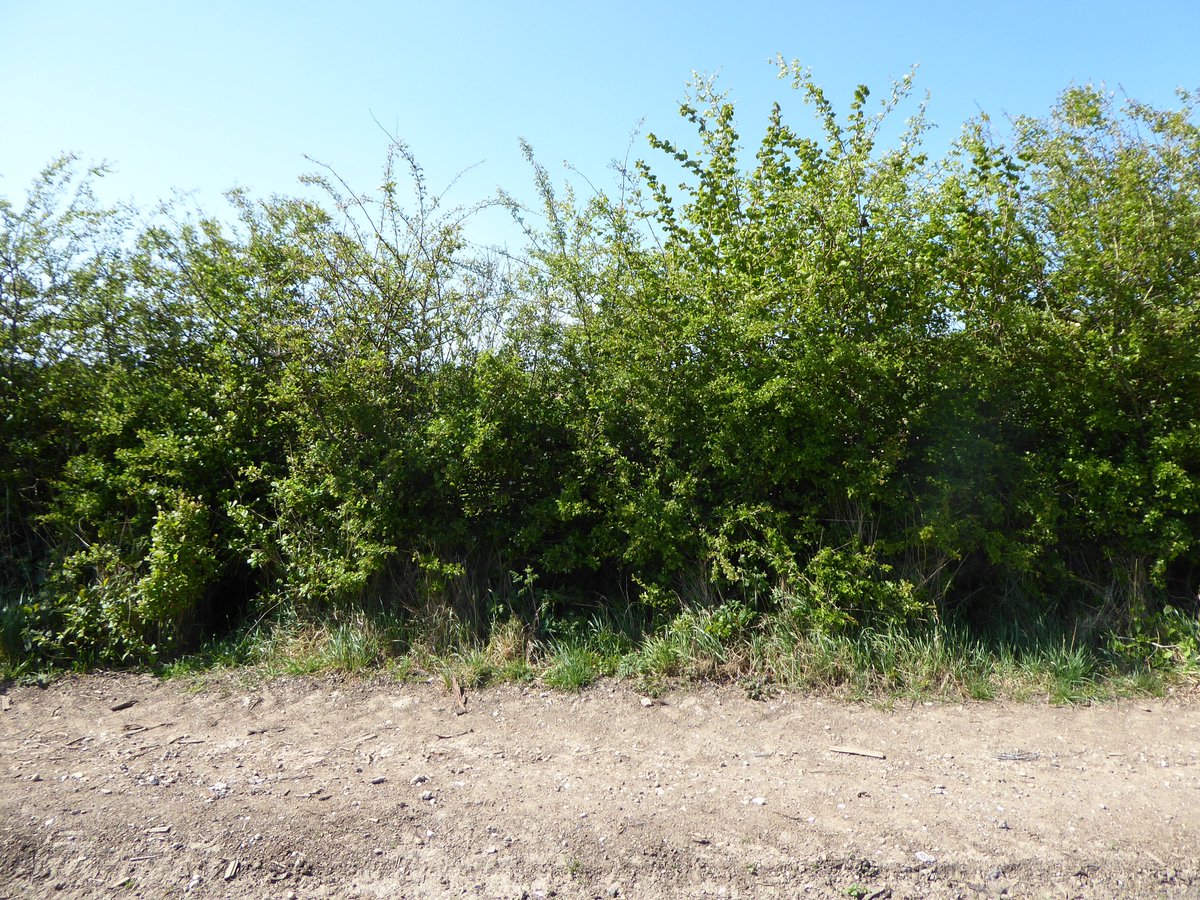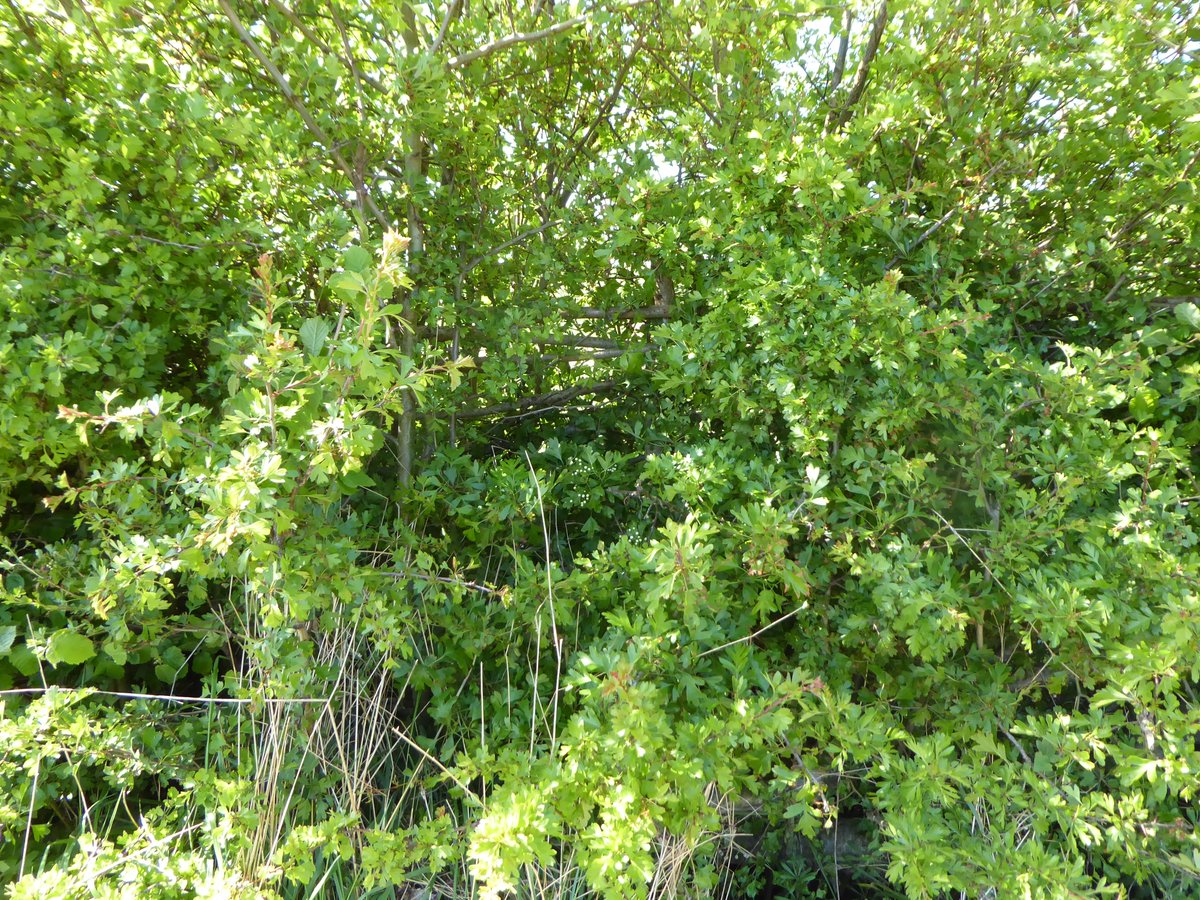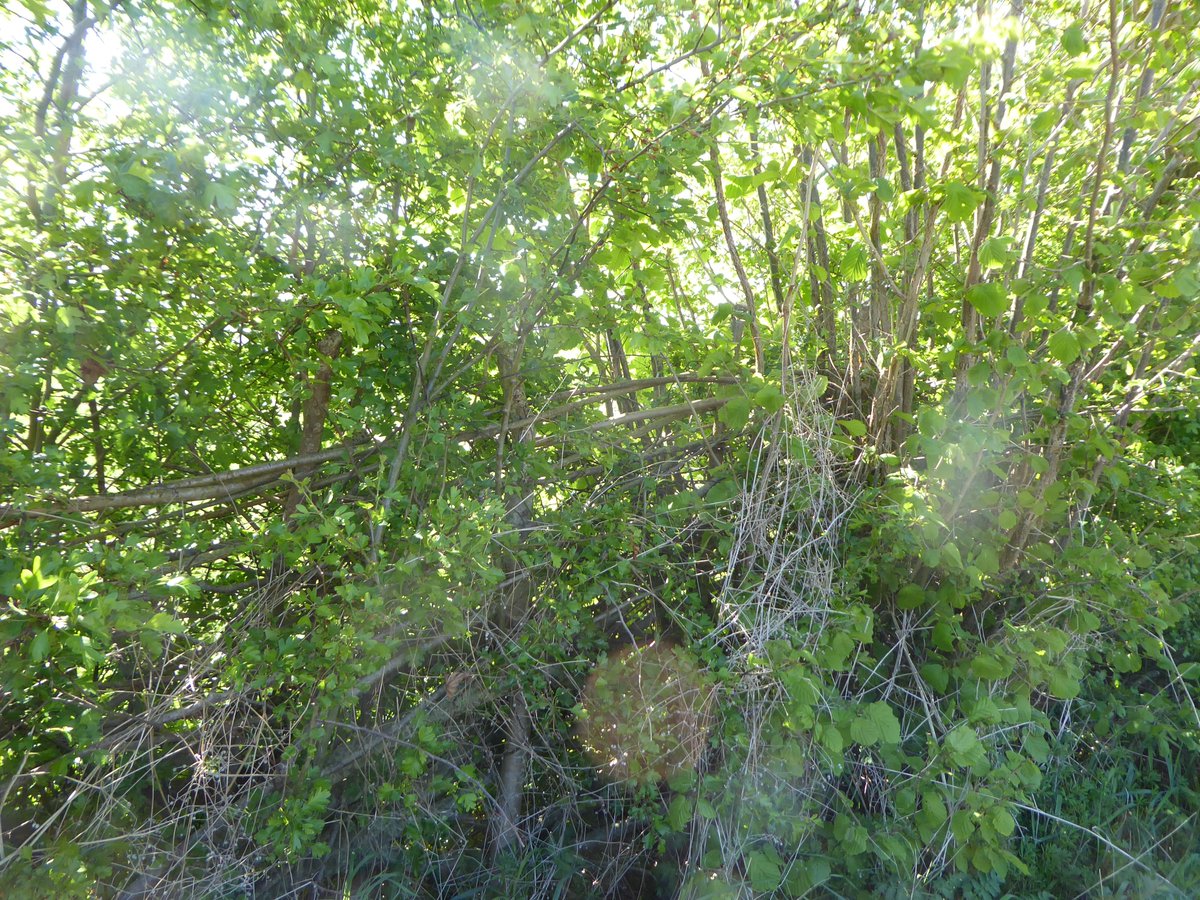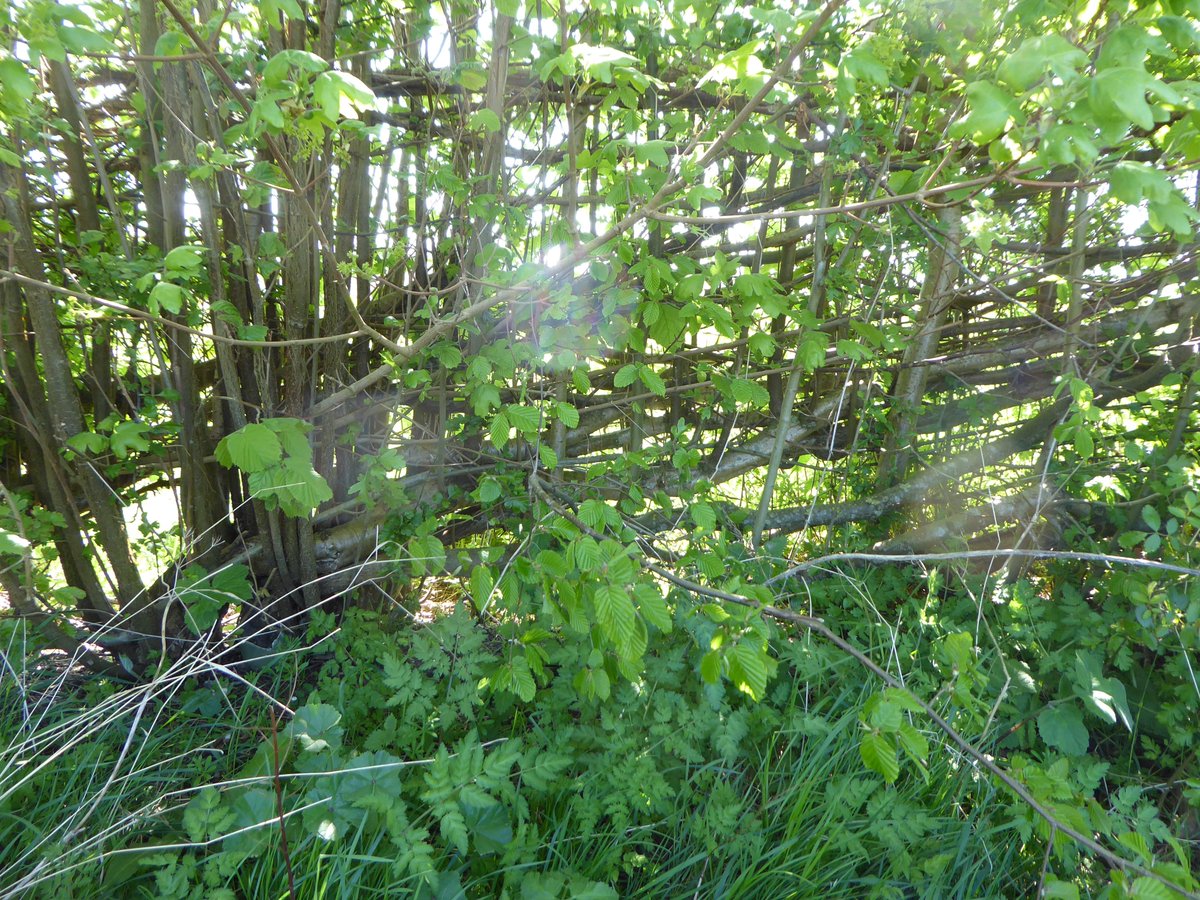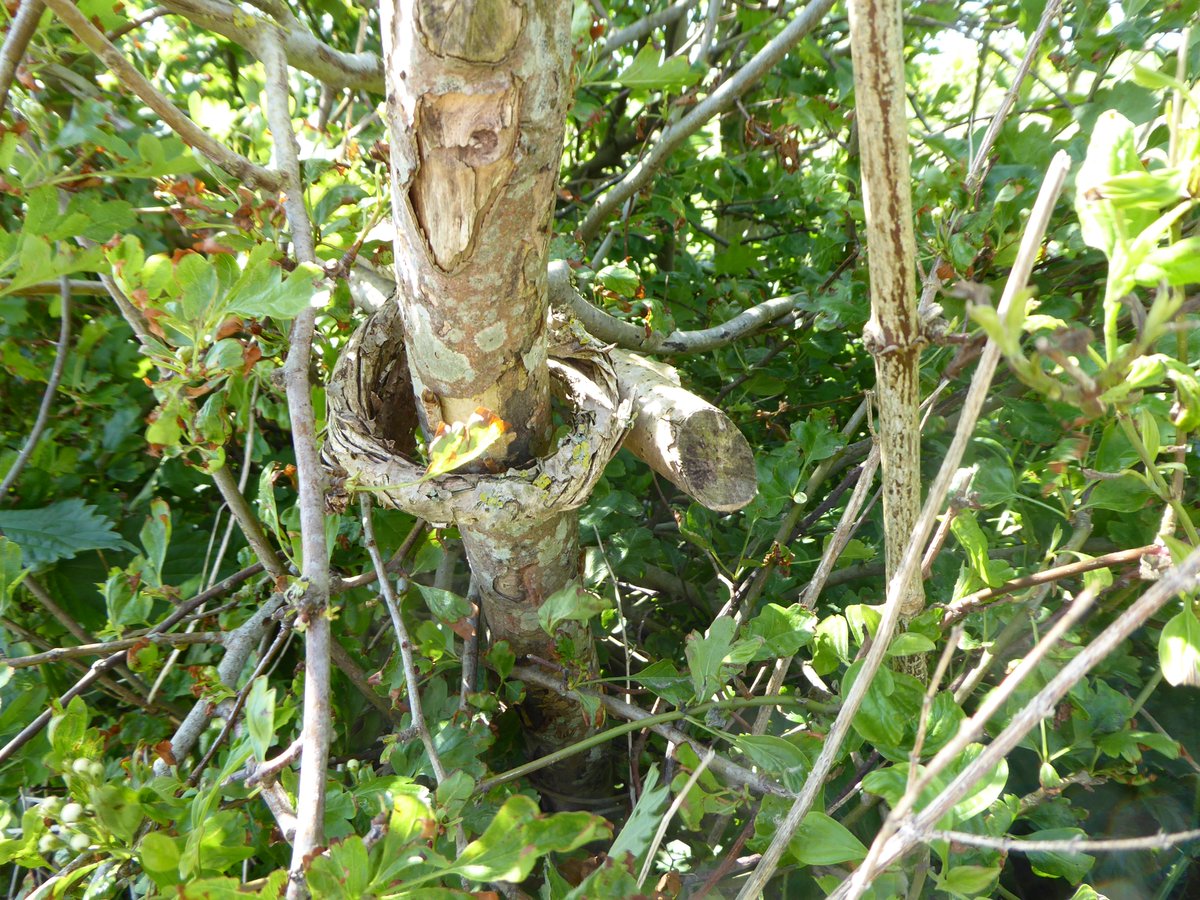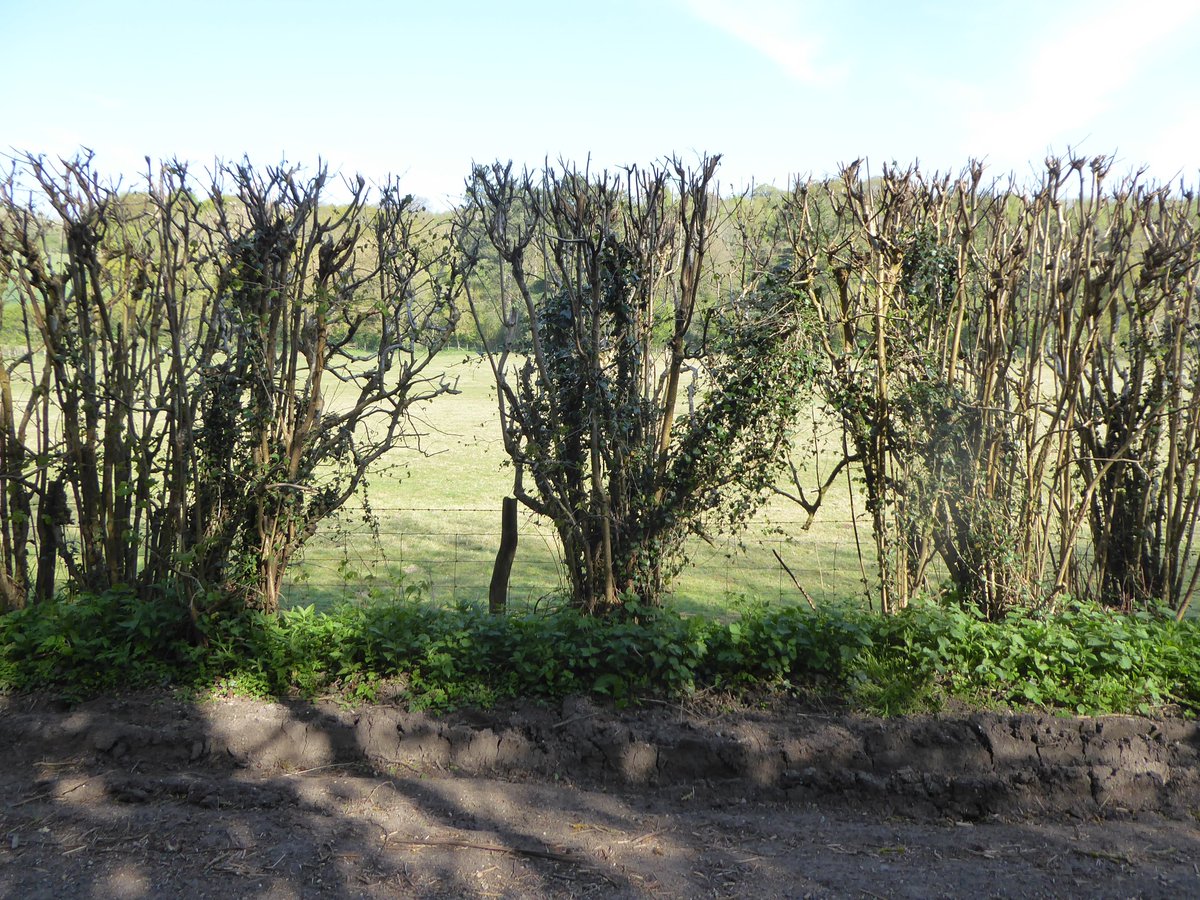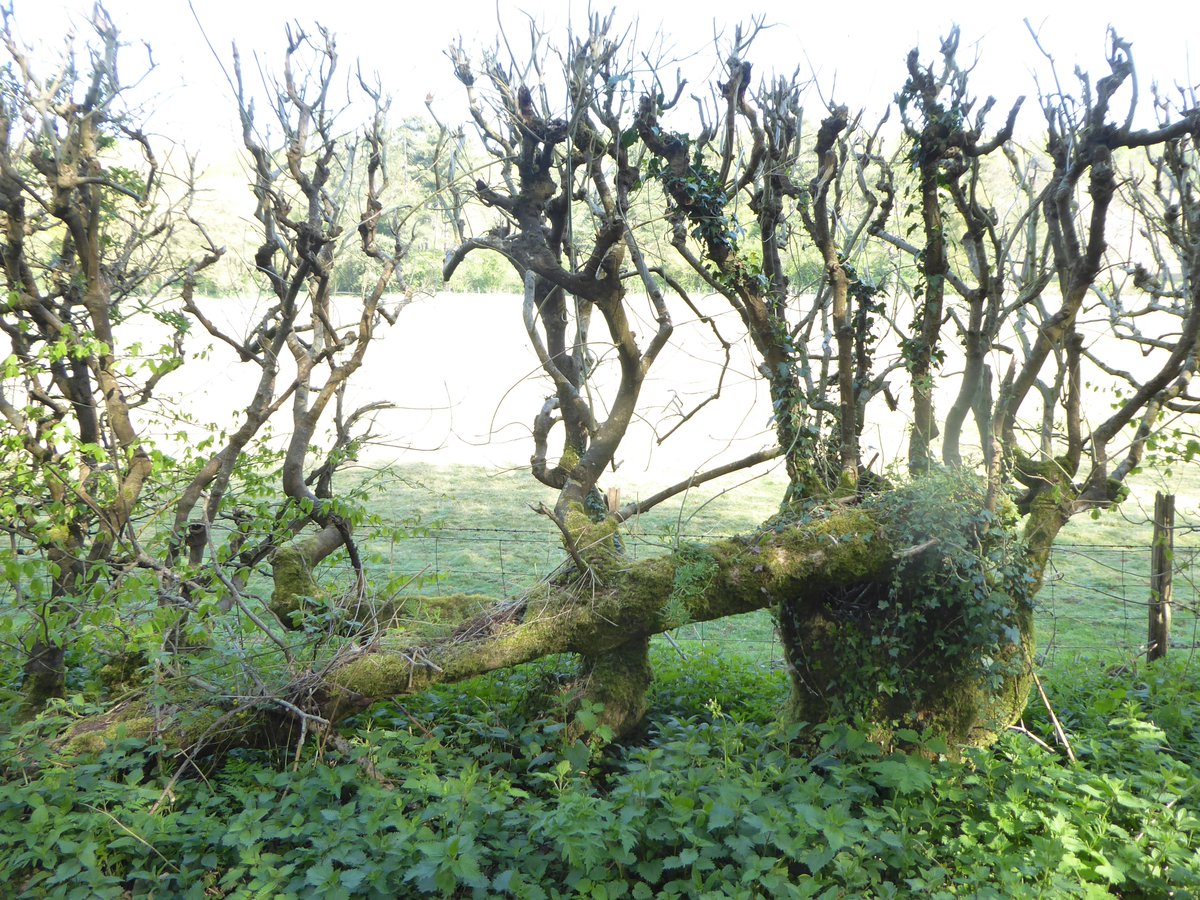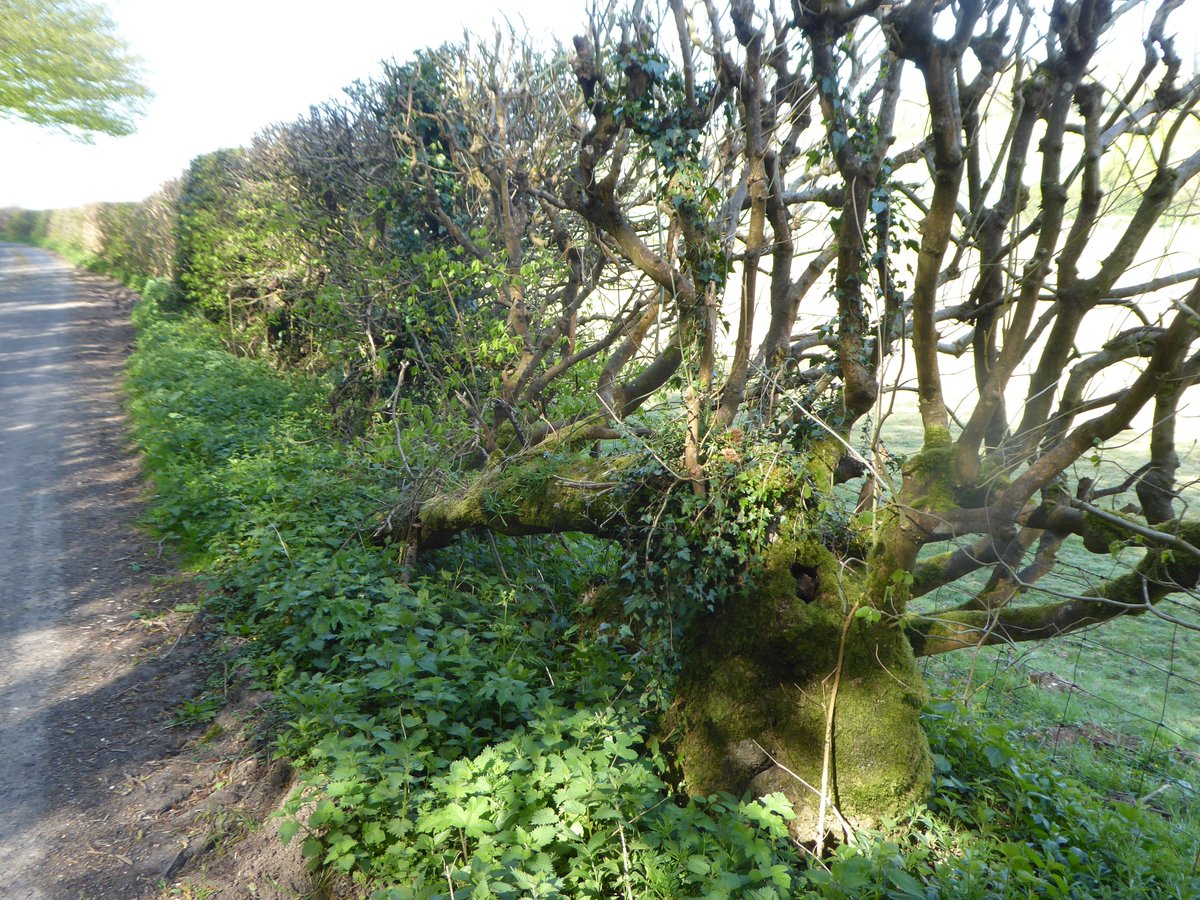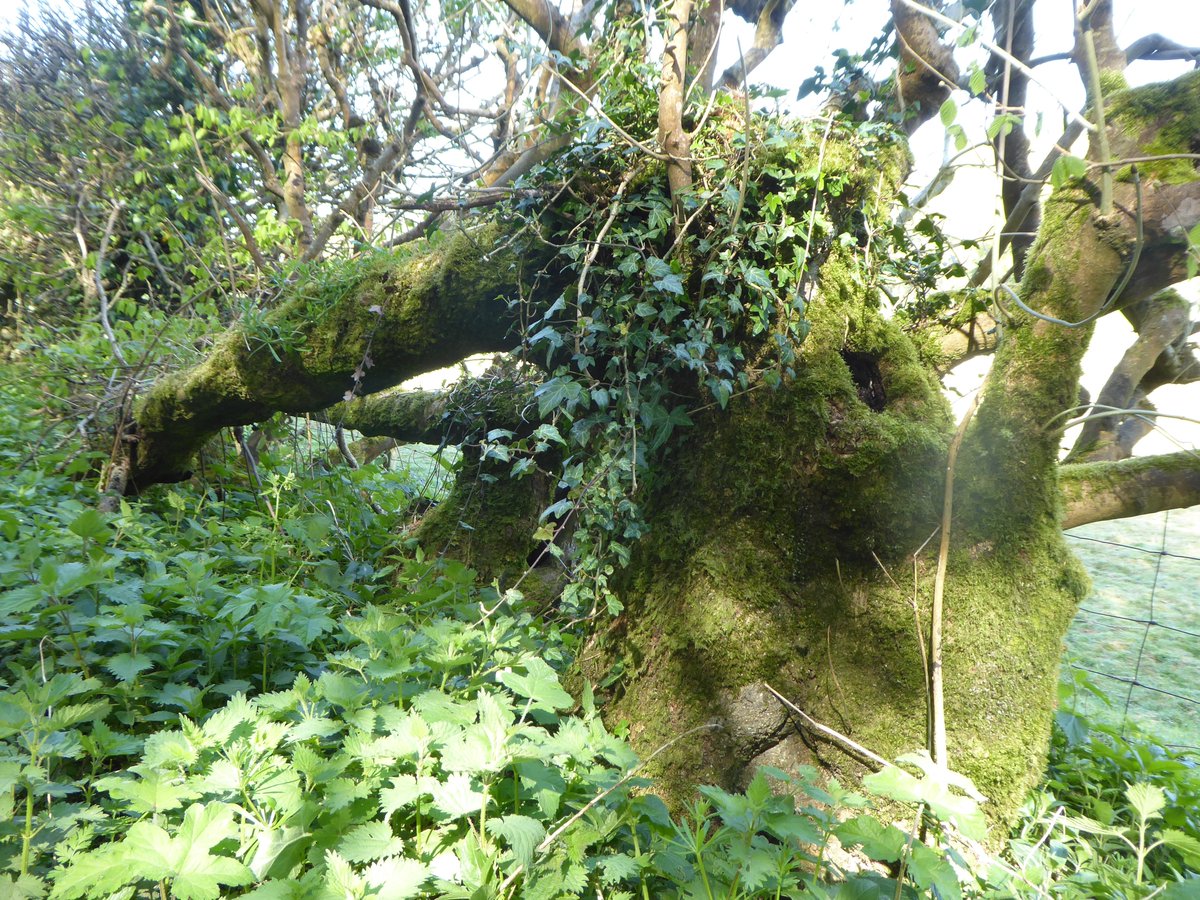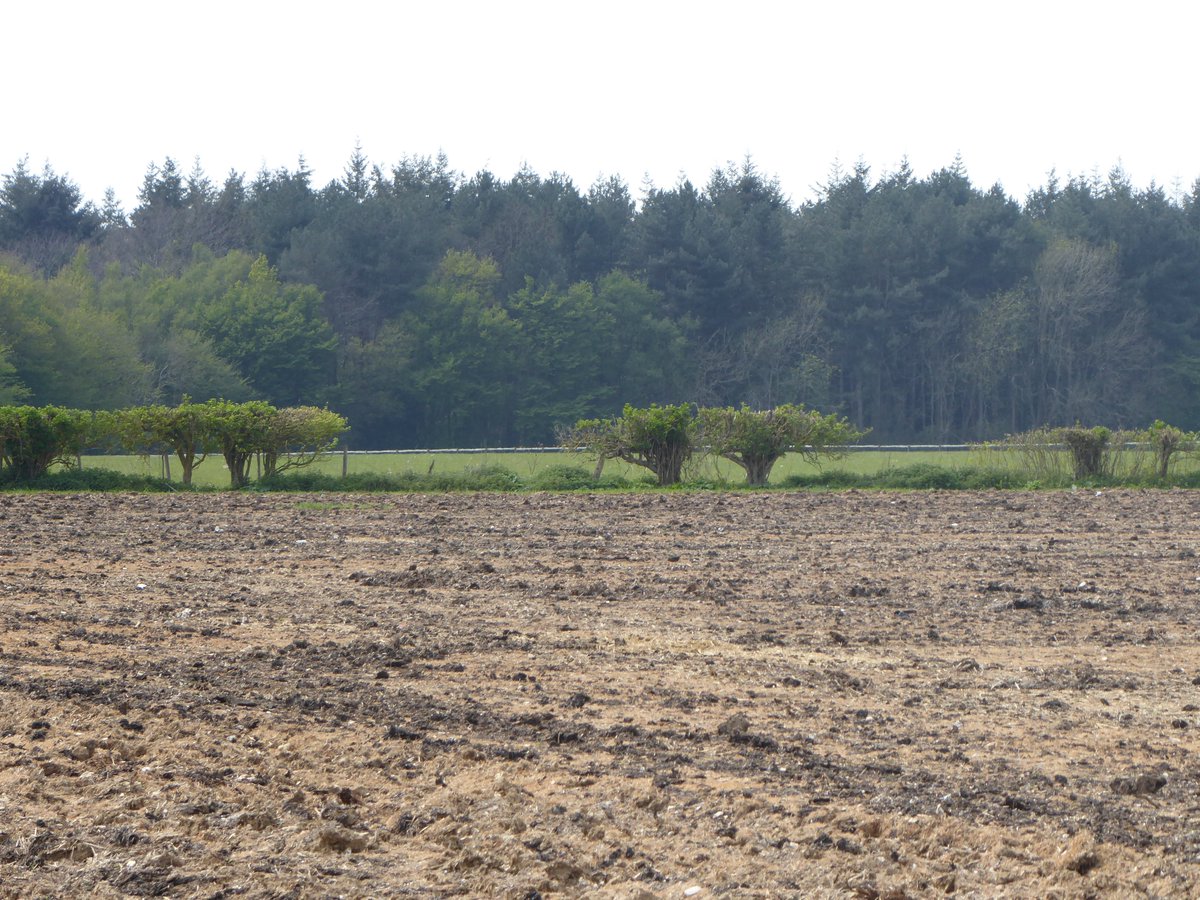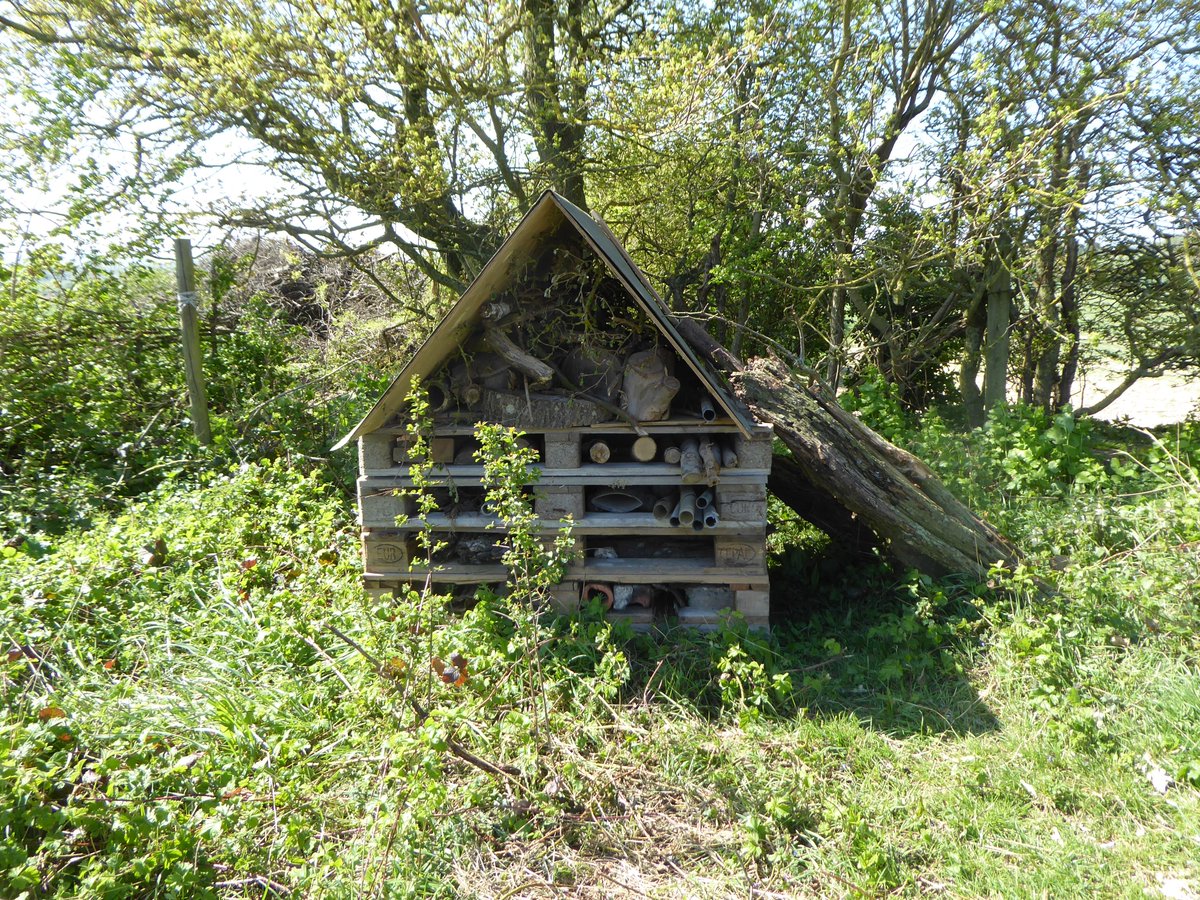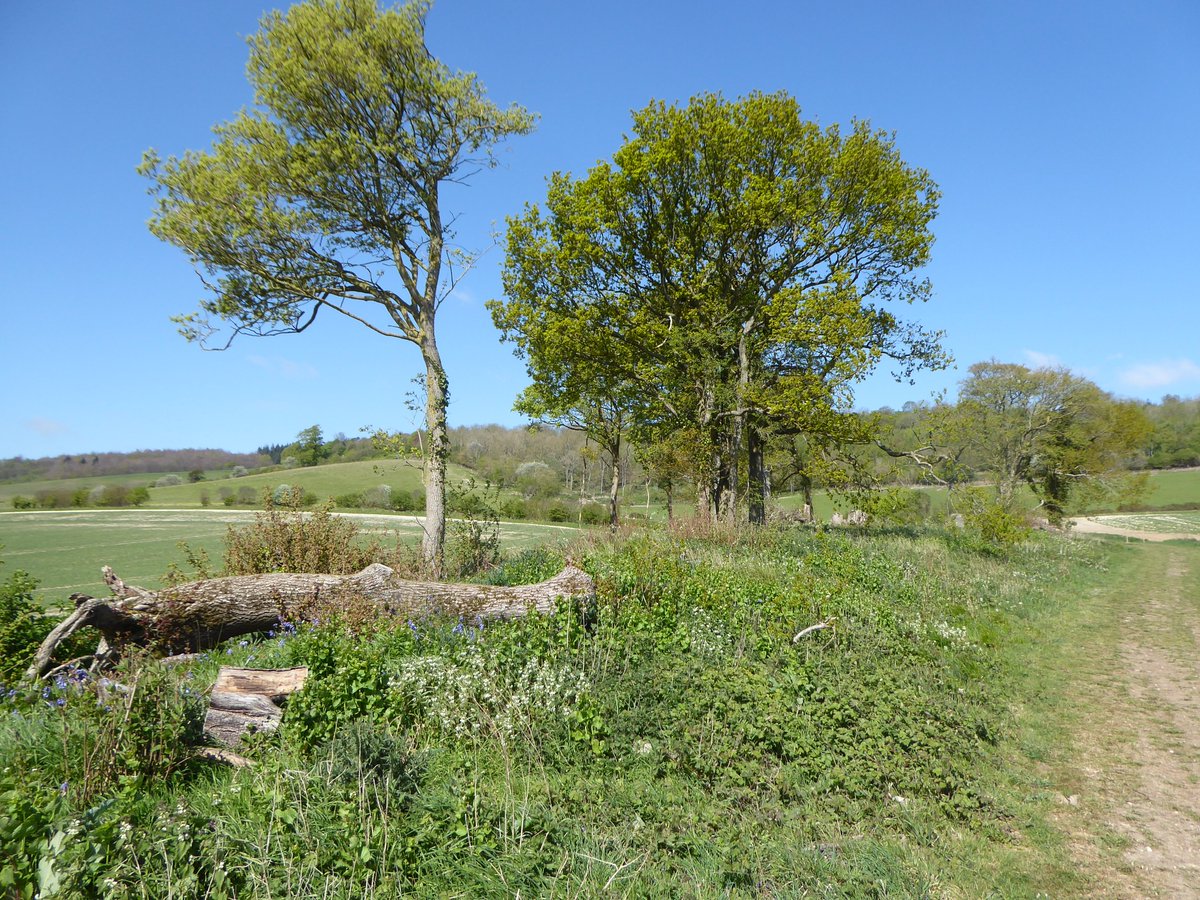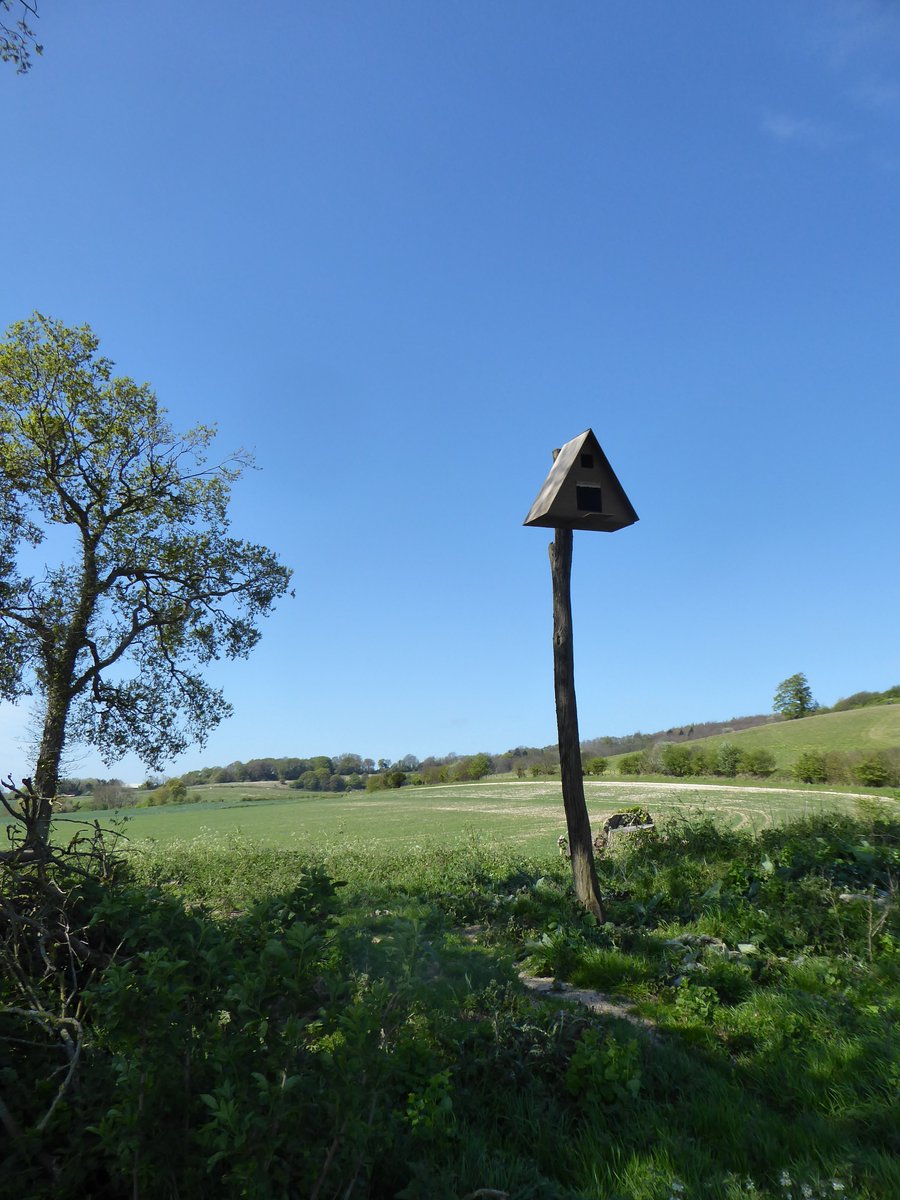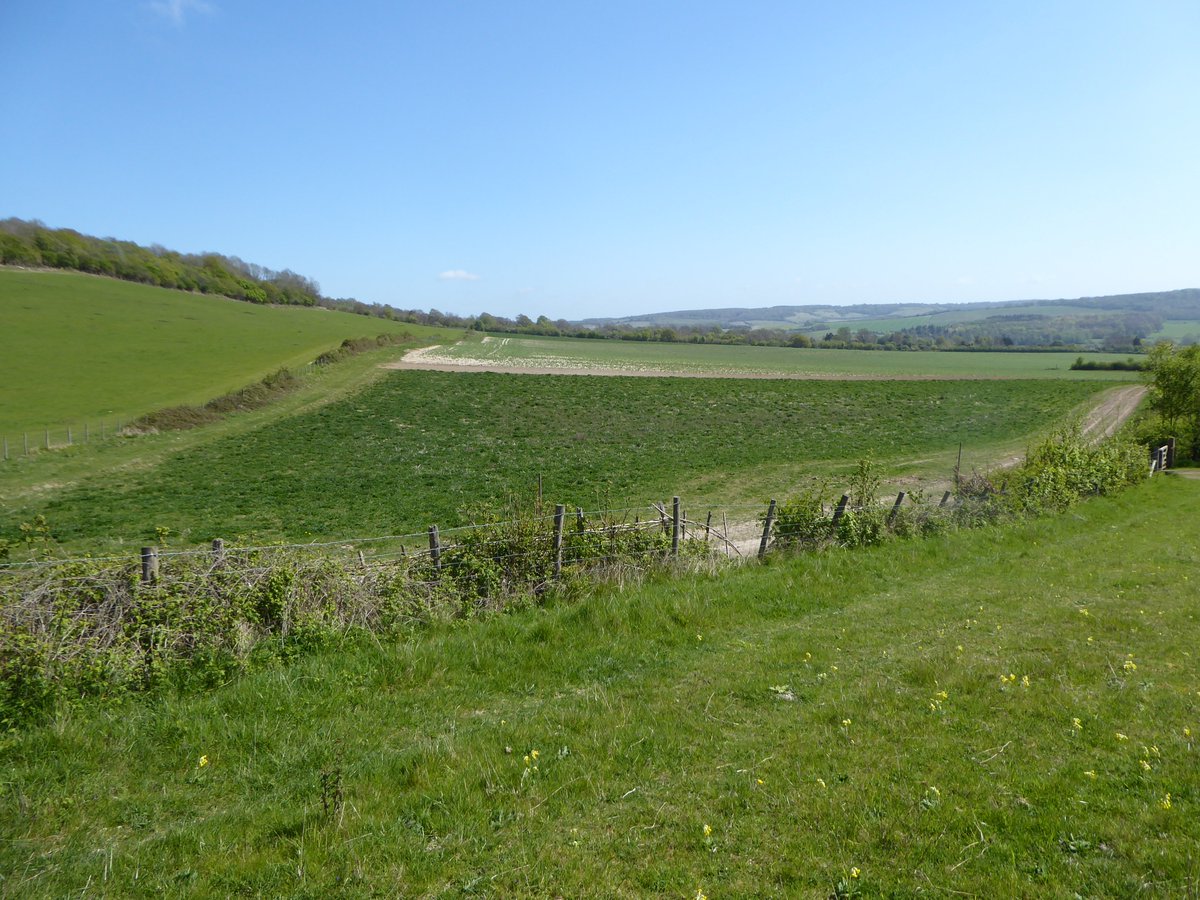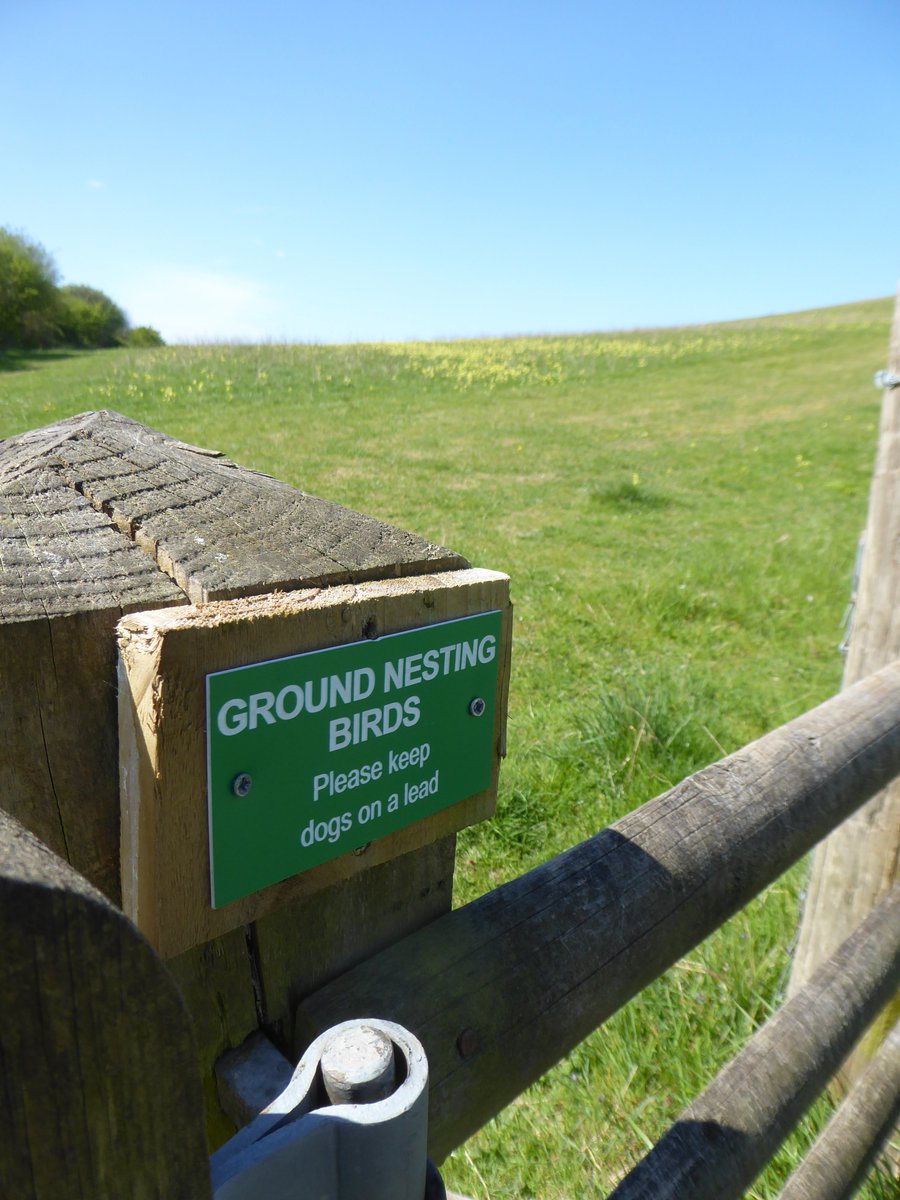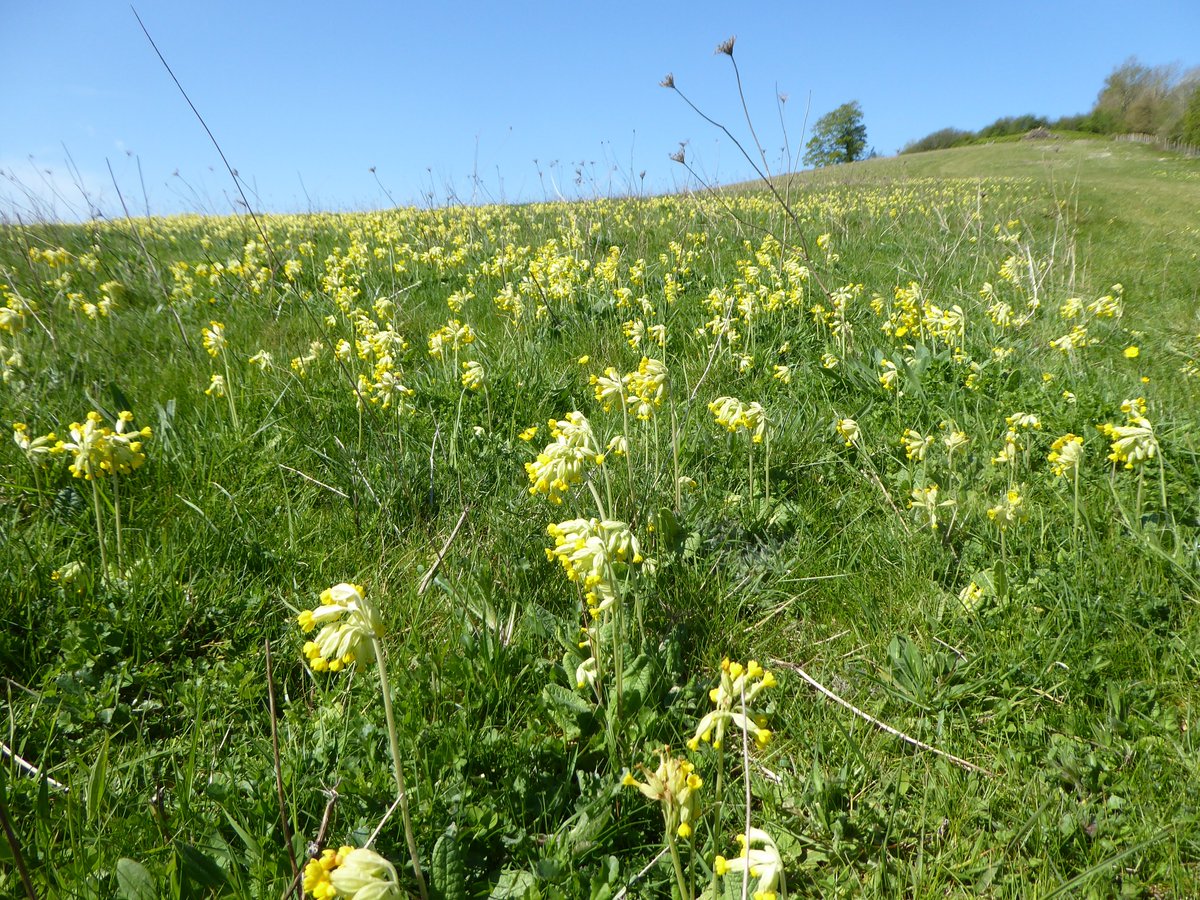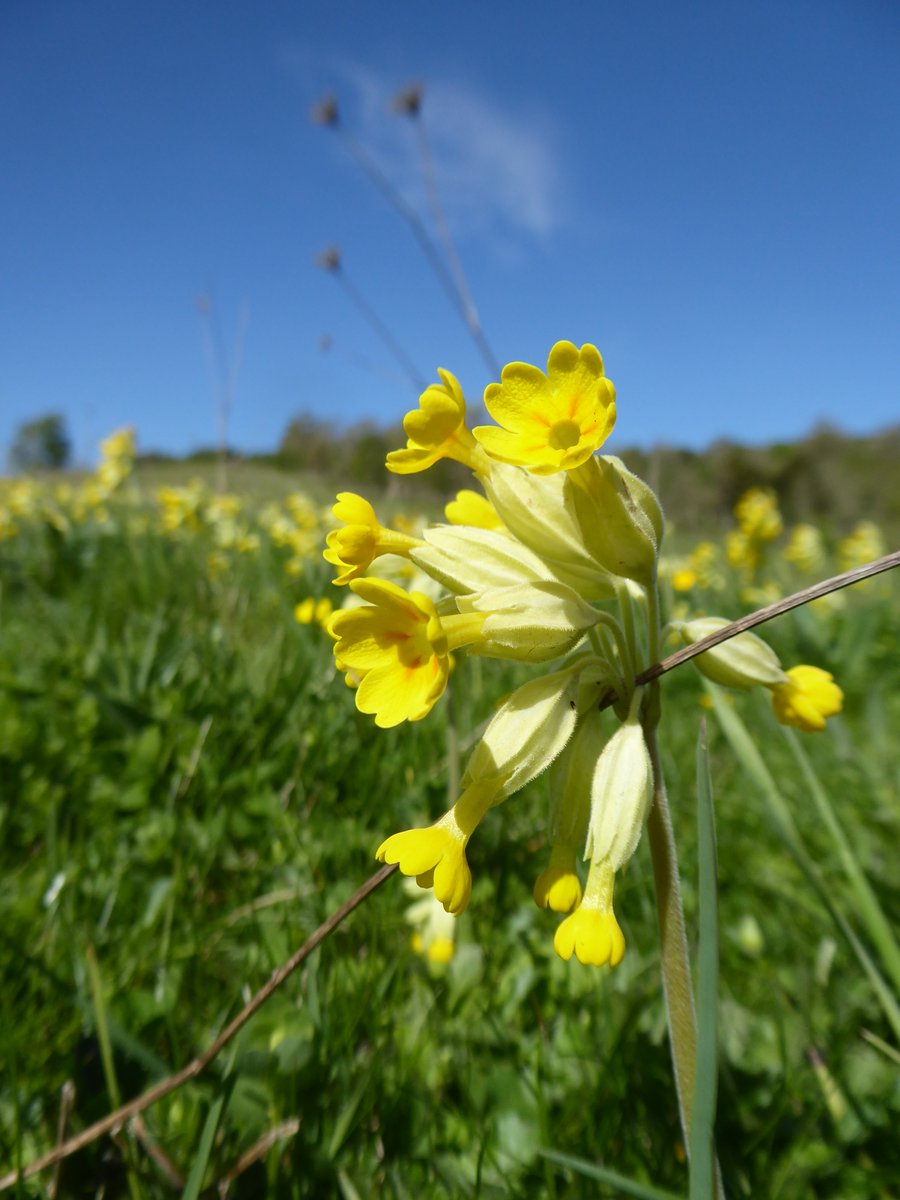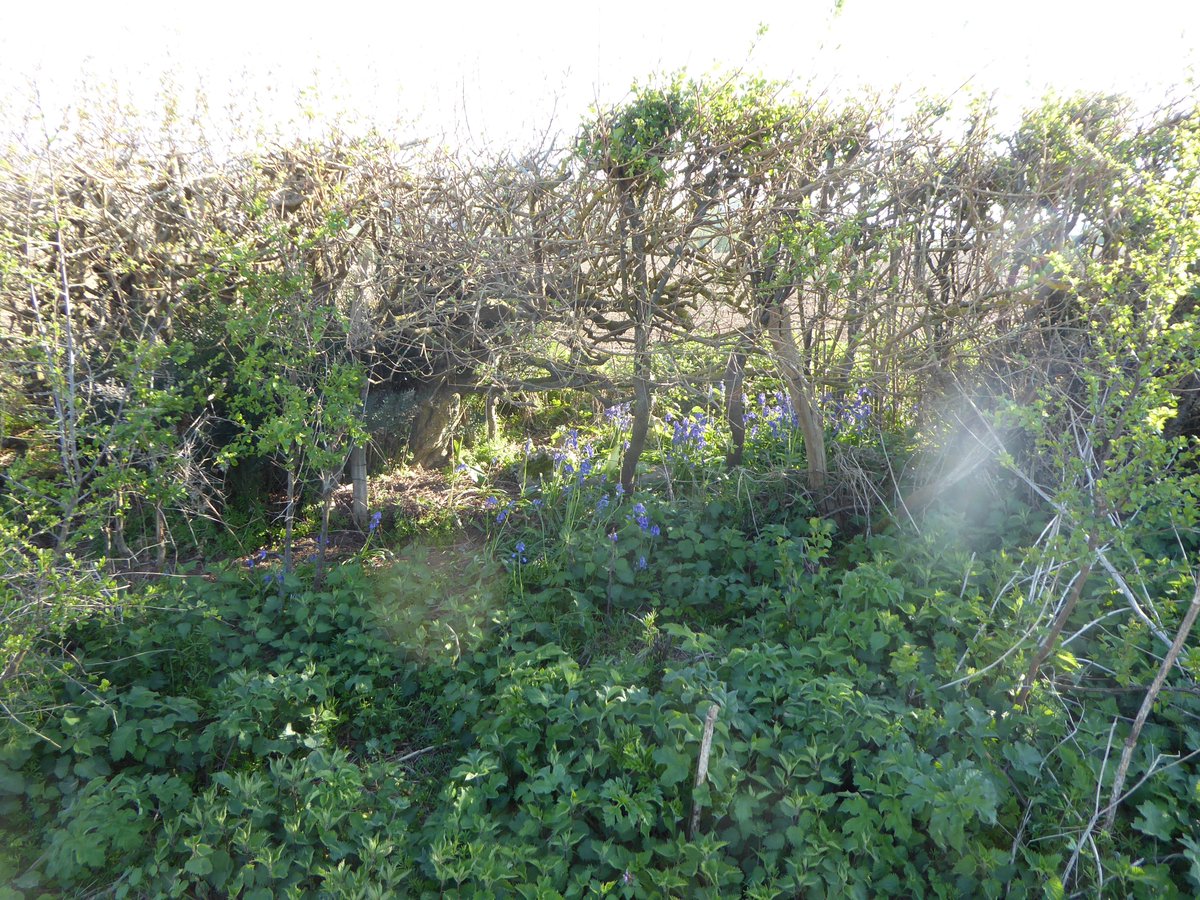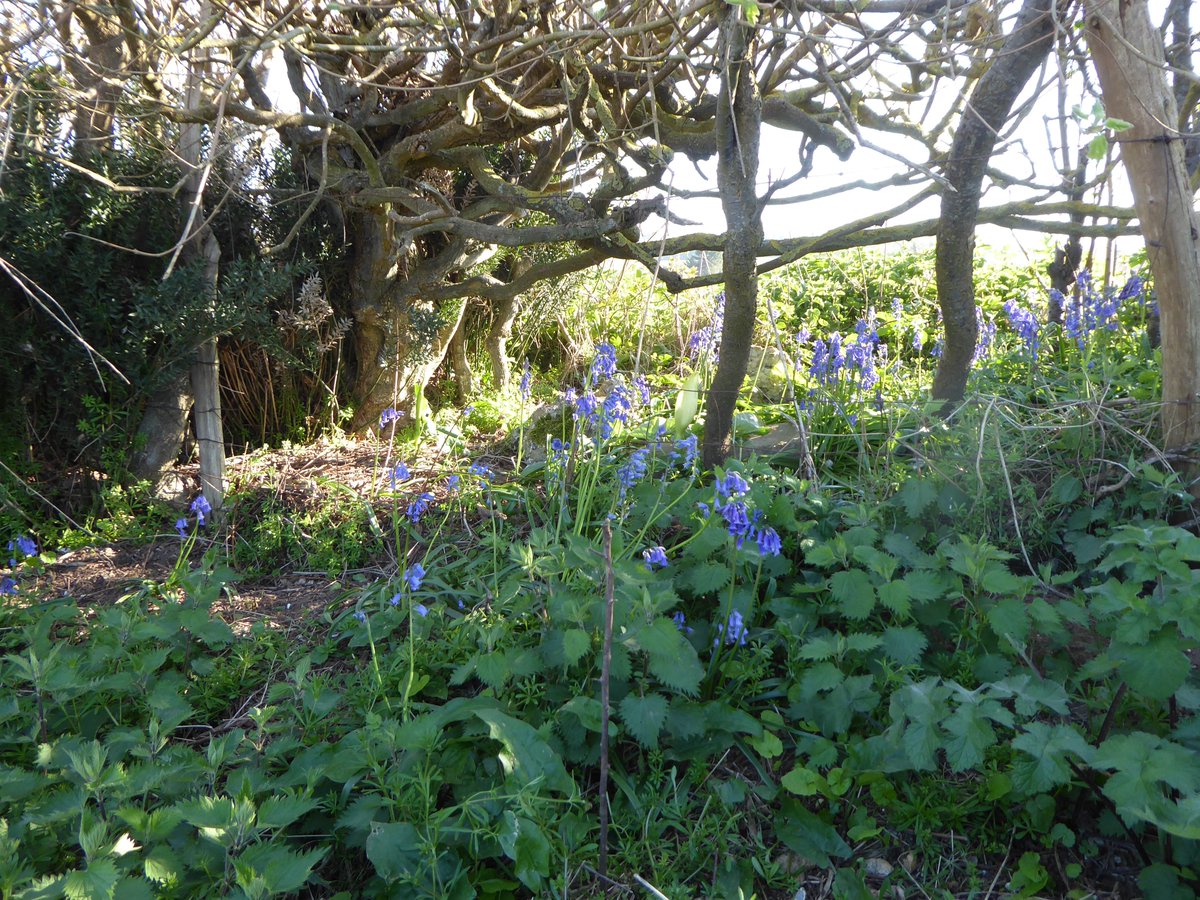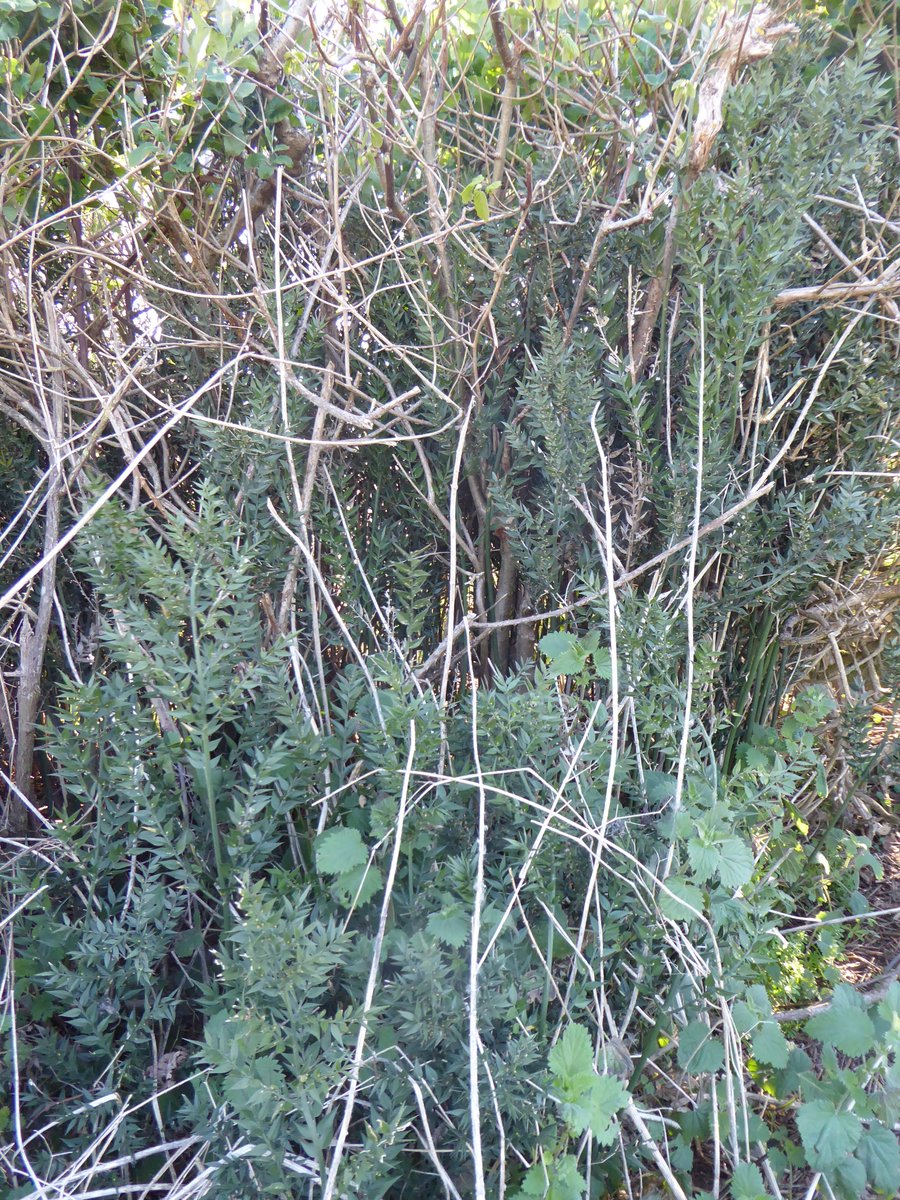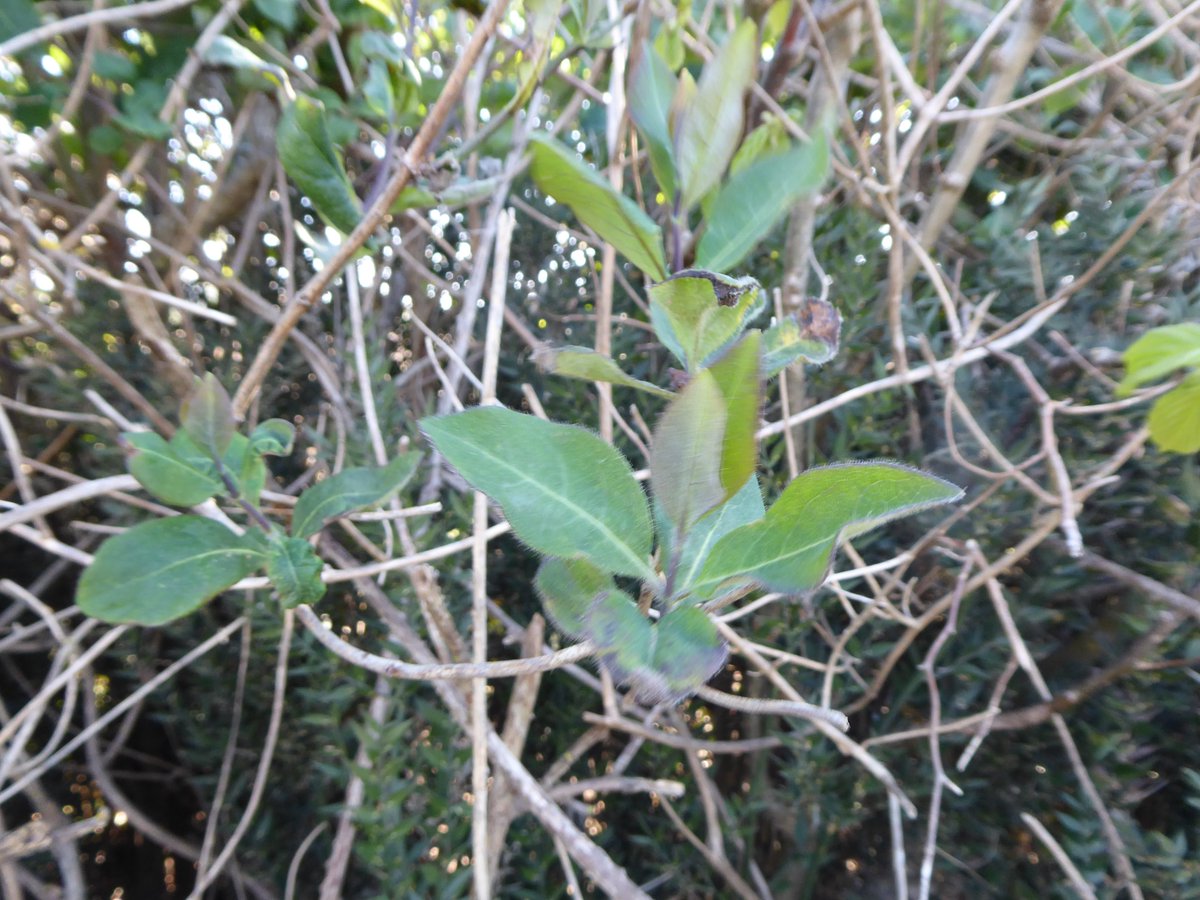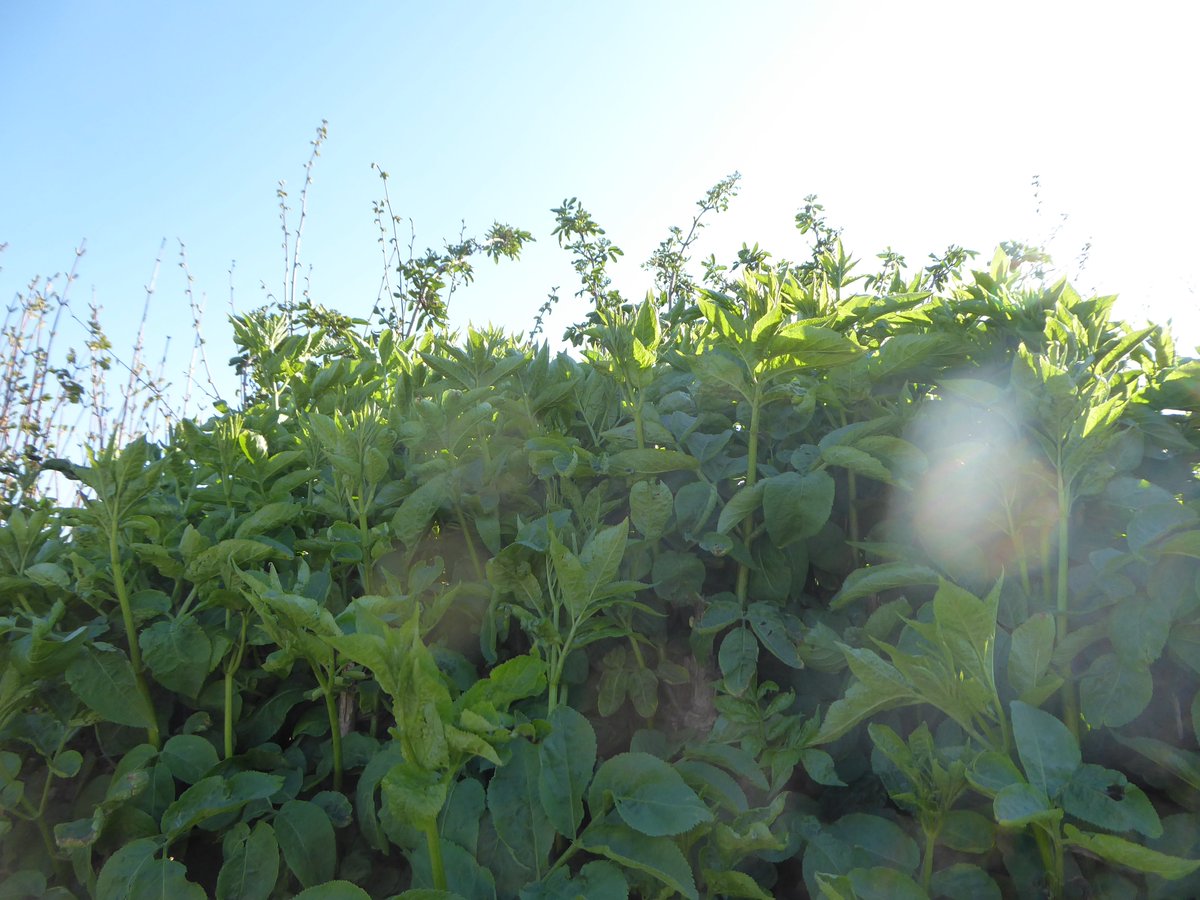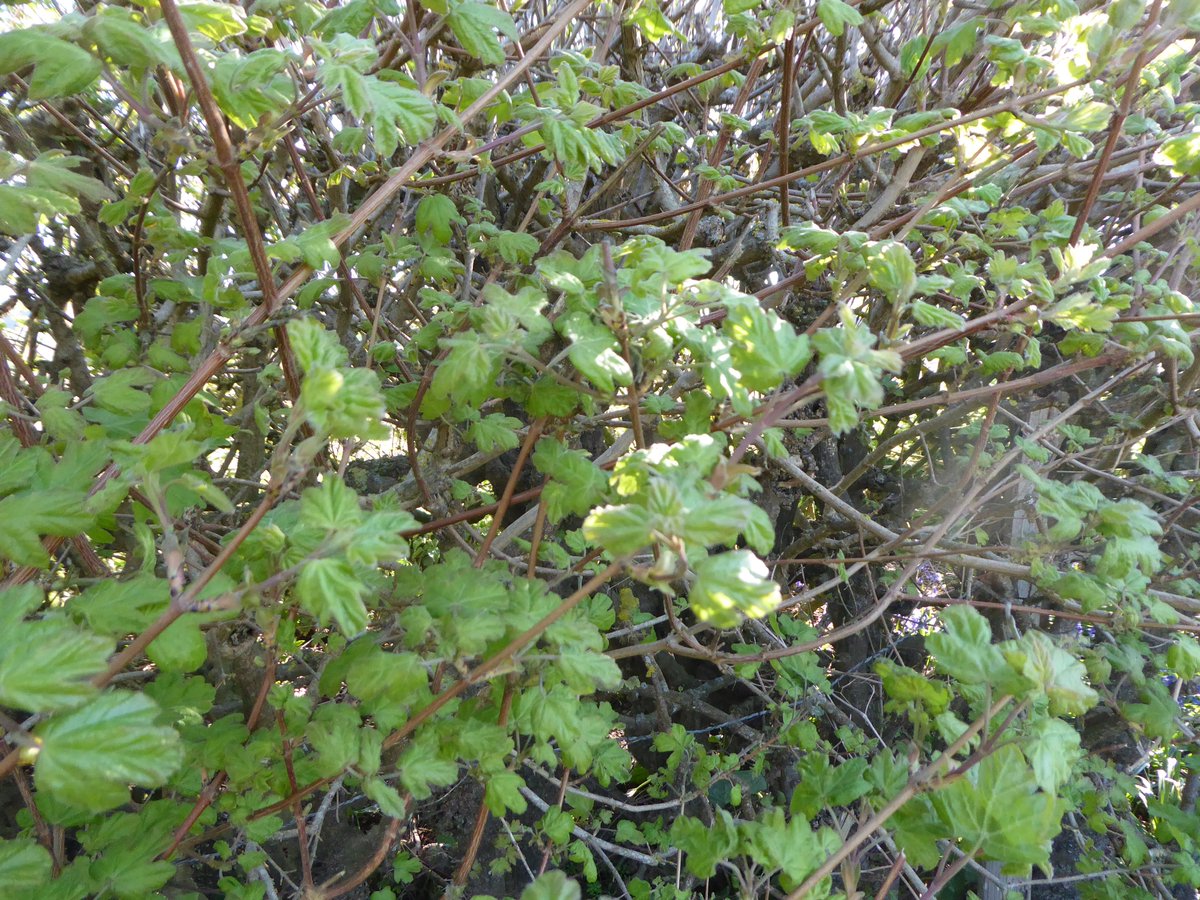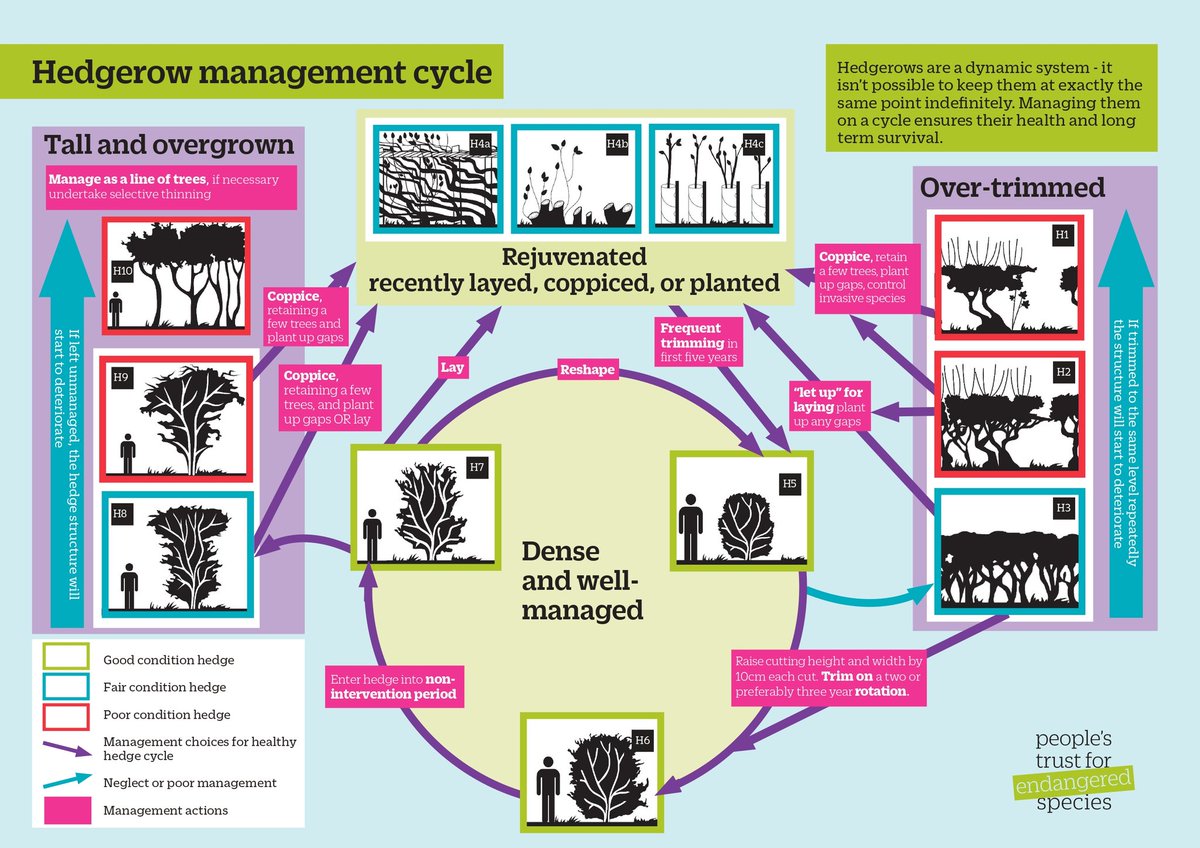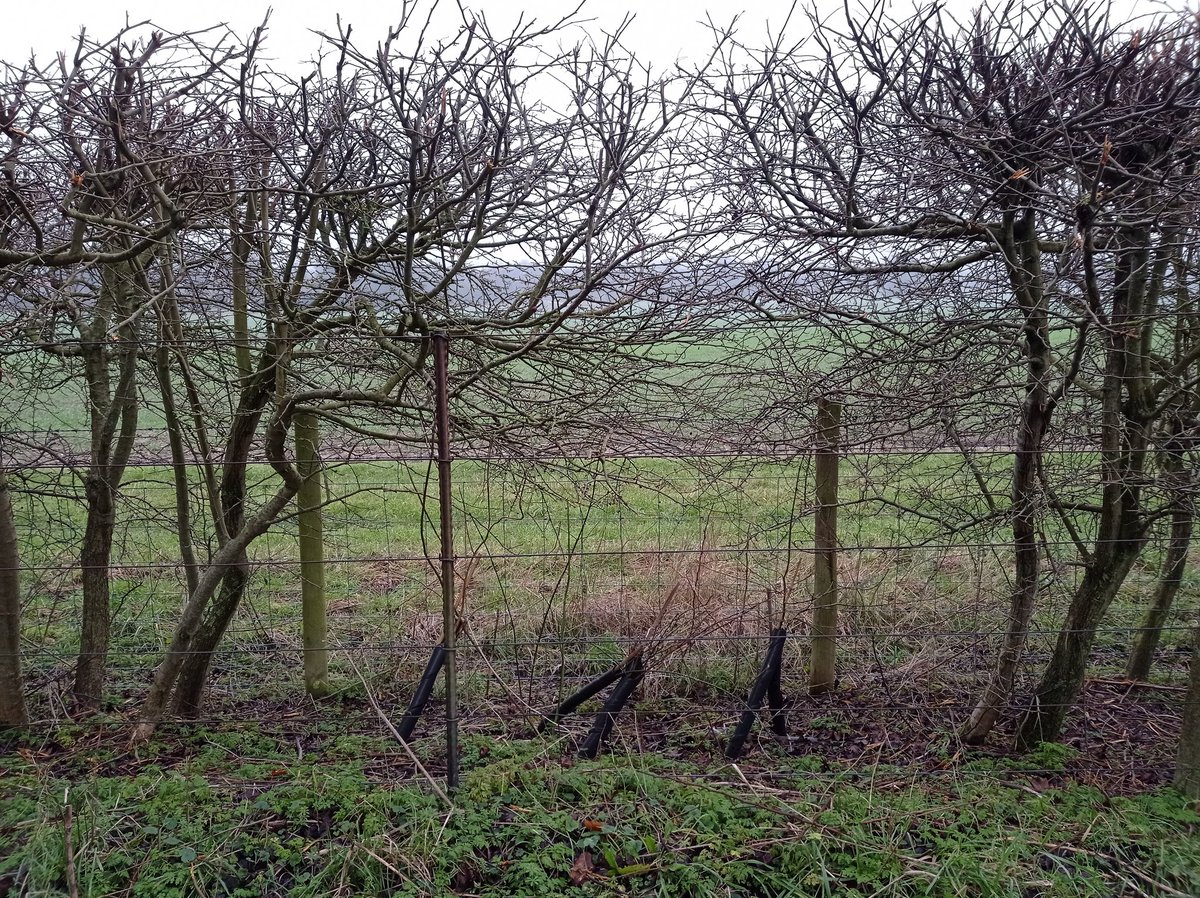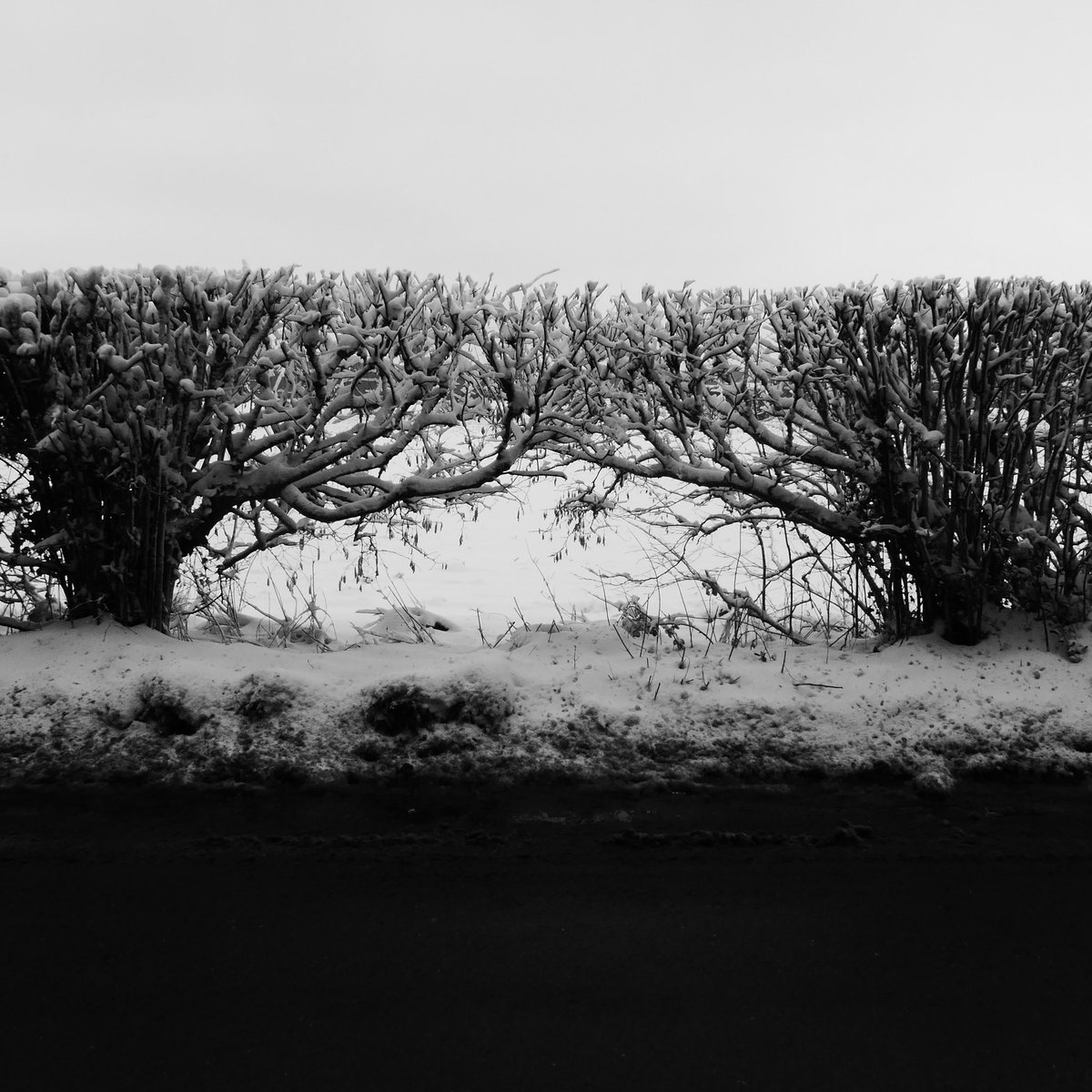I felt like following up on this hedges and hedgelaying thread from last spring, as I've lately seen a lovely example in situ and have my own photos instead of nicking them off the internet. https://twitter.com/gawanmac/status/1101907658456686592
This beauty is what I really want to share - a recently 'layed' hedge on a farm near Bilting on the south slopes of the North Downs in Kent. Lovely bit of work, and so heartening to see this beautiful and eco-friendly traditional practice still being done.
Here you've got a very clear view of the 'pleaching' - the stems are cut *almost* completely through, giving enough flexibility to lie them at a flat angle, while keeping the plant alive by retaining a crucial bit of the cambium layer. Billhook or chainsaw are the tools for this.
Good views too of the vertical hazel stakes and the horizontal hazel rods woven between them. These keep the newly layed hedge nicely in place and the structure sturdy until the hedge fattens up.
The hedgelayer didn't finish this section yet, so there's a great before and after view here. Before on the right, then halfway along in the picture the 'after' version on the left.
So what do you get for laying a hedge in this way? A year or two later, you get this - a beautiful, bushy, vibrant hedge from top to toe, free of gaps, bursting with life, a great wildlife shelter and corridor - and stockproof if that's what you need.
How do you know that last one was layed a year or two ago. Peer in and you can make out the hazel structure.
What happens if a landowner doesn't maintain their hedges in this way? They get leggy, they get gappy, they lose much of their wildlife value and their floral value (a hedge bottom can be a fantastically diverse niche botanically). They start to look like this (and much worse):
That last picture is a particularly sad sight, because that's a properly old hedge that has been layed in the past but is now neglected. Look, you can see where a pleacher was layed a very long time ago:
Look how thick and gnarled that trunk is, full of habitat niches, amazing for insects and little mammals. But this is a hedge on its way out through neglect.
On this trajectory, without some proper TLC, it's on its way to becoming... this. This picture breaks my heart. And it's in the heart of the North Downs, whose hedges are part of what makes the area special.
On a more positive note, I want to pay tribute to the farmer responsible for the beautifully layed hedges at the top of this thread. I'm not sure which Bilting-area farm they belong to, but it's clearly a farm that cares. They've also got a bug hotel in a field corner...
They've also left this very large field corner for wildflowers and pollinators - in a few weeks it's going to look spectacular.
Back to hedges. This hedge could use some TLC, but can you tell why this is an exciting hedge? It's about what's growing in the hedge bottom.
The answer is that there are bluebells and Butcher's-broom present. These are both, I believe, ancient woodland indicators, which suggests *possibly* that the hedge is either a remnant of now lost ancient woodland cleared for arable farming...
or - again possibly - that this old hedge is being used as a corridor by these plants colonising the hedge from a nearby ancient woodland. I'm being cagey here because you really want a larger suite of AW indicator plants to say any of this with confidence, and these are just 2!
In any case, nice hedge, & probably quite old - it's got a lot going on in it - there's honeysuckle, elder, hazel, holly, hawthorn and more. Counting hedge species is not a reliable indicator of age, but this certainly looks like it's been around a long time, given its diversity.
I forgot to share this great graphic by @PTES, a guide to when a hedge needs attention. If you've got land with hedges on, this is really useful.
One of my favourite local hedges. Monumental! Not a farmland hedge so not typical, and unfair to compare it with field-edge hedges, but it's really beautiful, high and thick.
Nearby, there is an area with narrow country roads lined with wonderful mature beech hedges running for hundreds of metres. As they mostly keep their dried leaves through winter they provide a welcome bit of colour when we most need it.
Near Stowting recently. Sad to see a hedge grown leggy and gappy, but great to see that hedge plant whips have been planted in the gaps where perhaps they judged the gaps were too big for laying? So often these hedges will just be neglected and will peter out over time, so 






 Read on Twitter
Read on Twitter